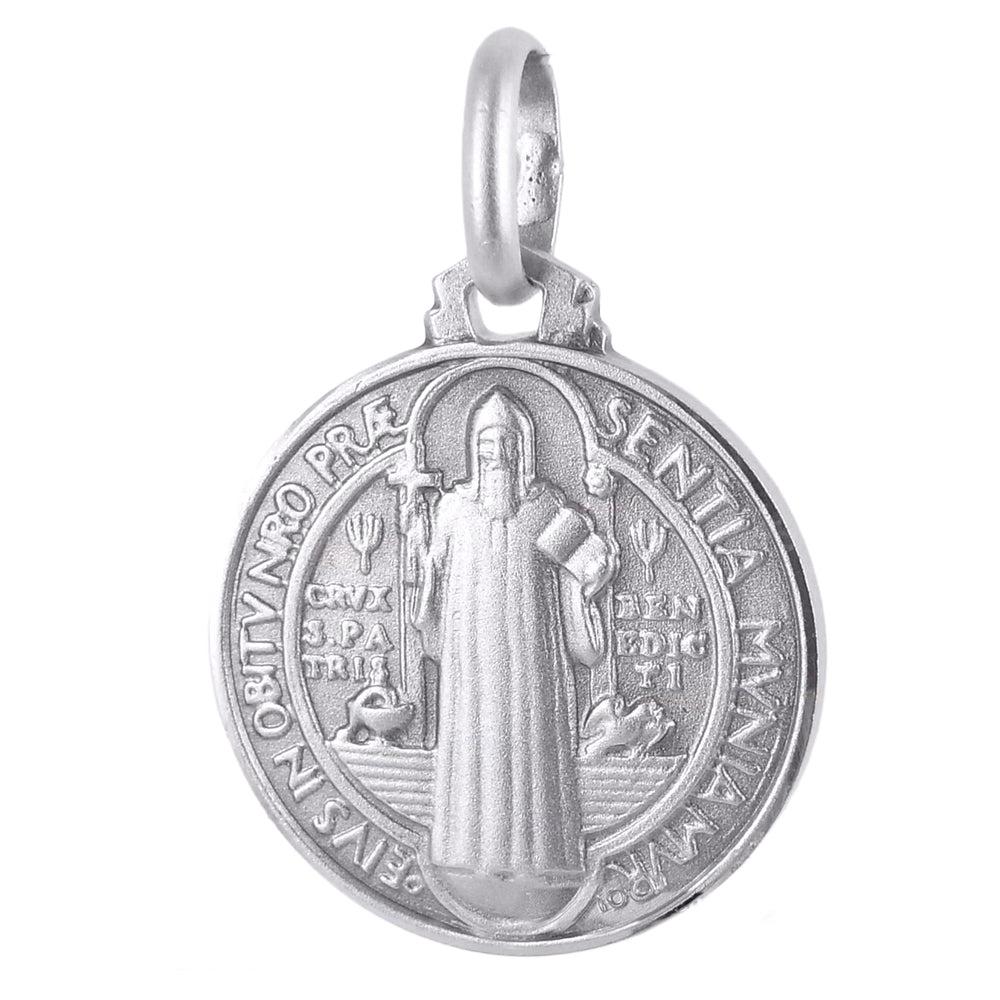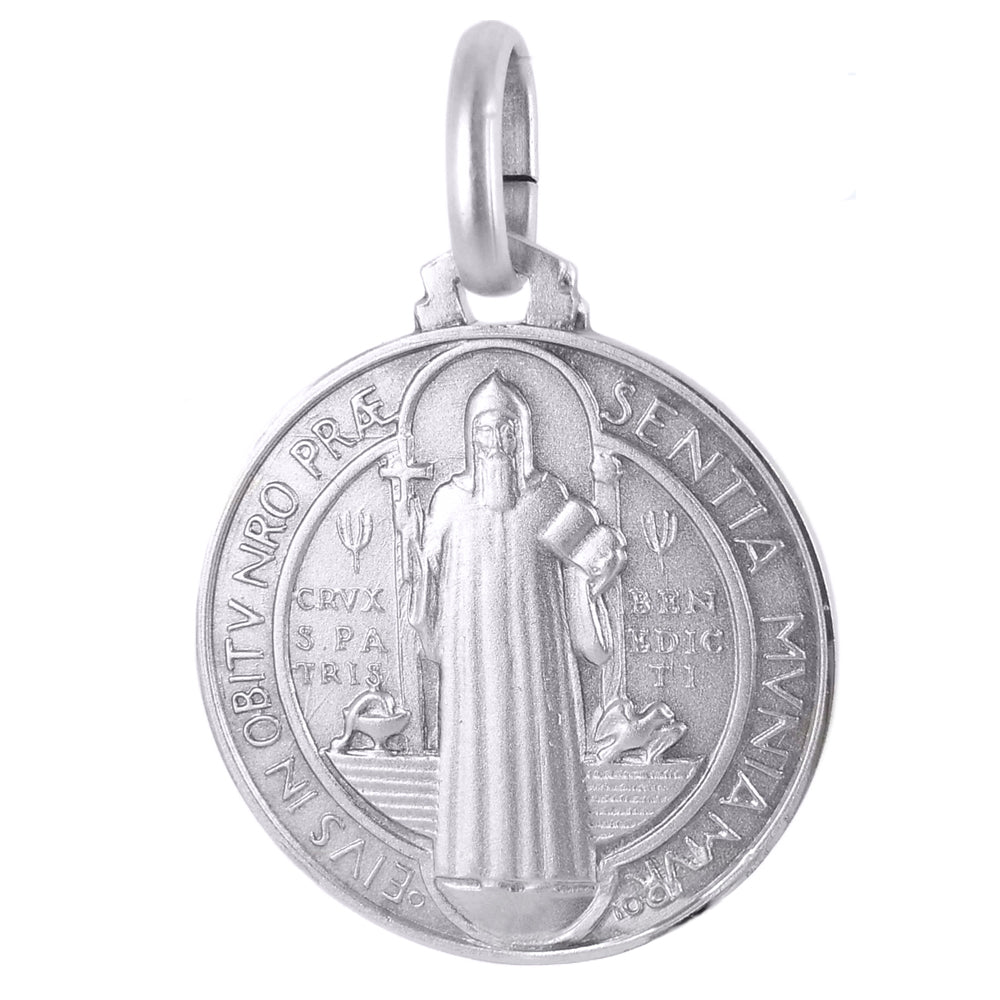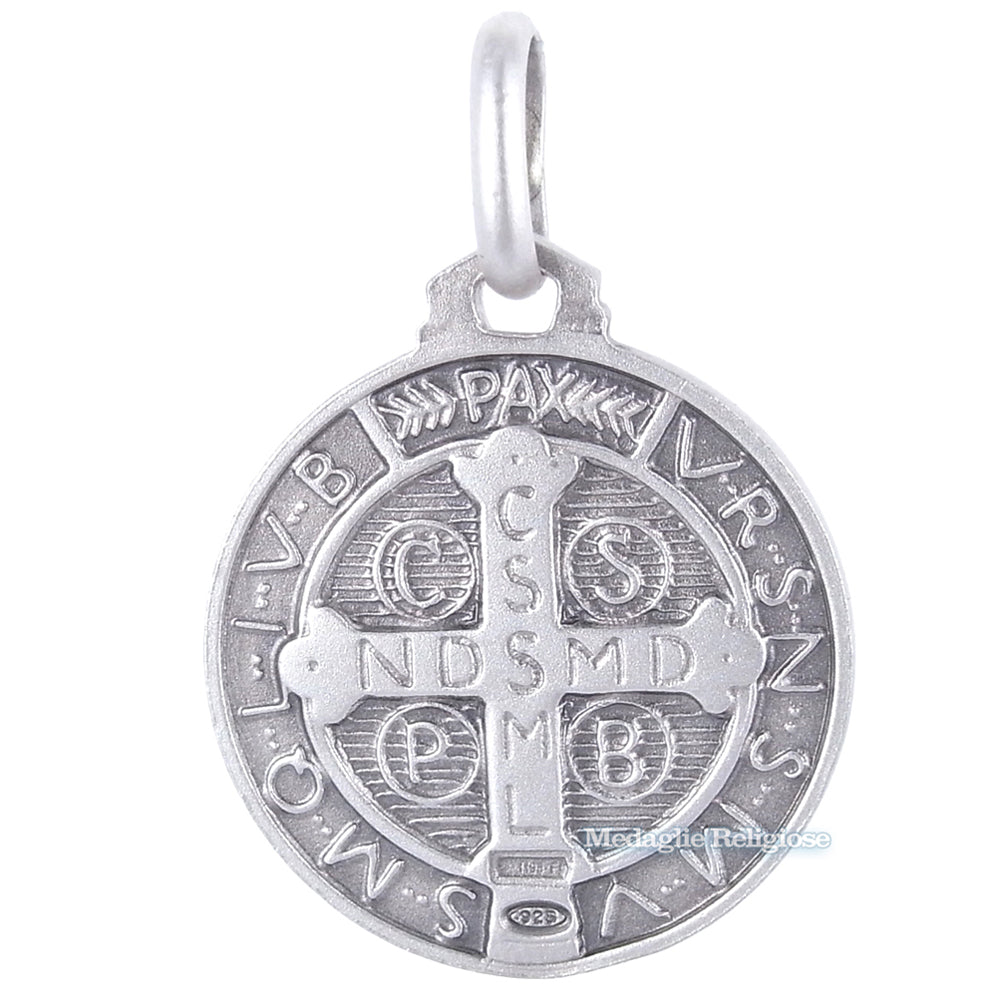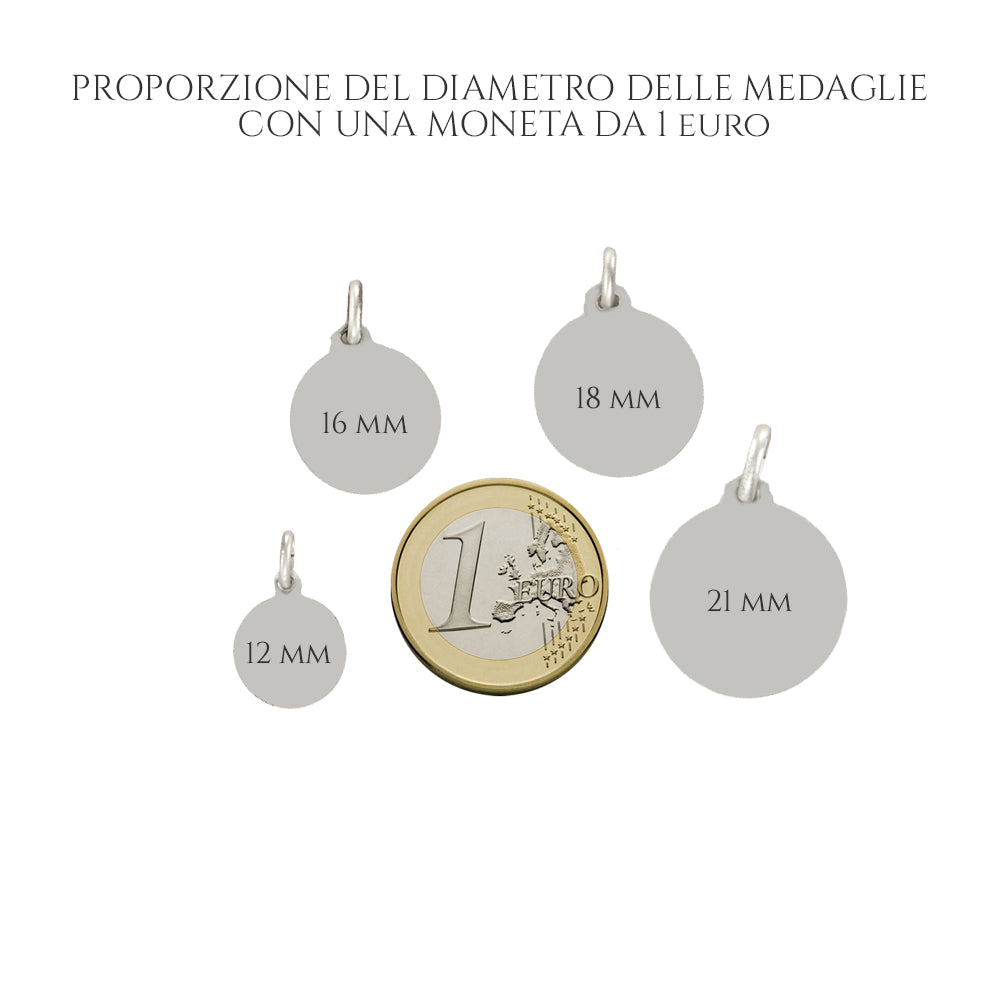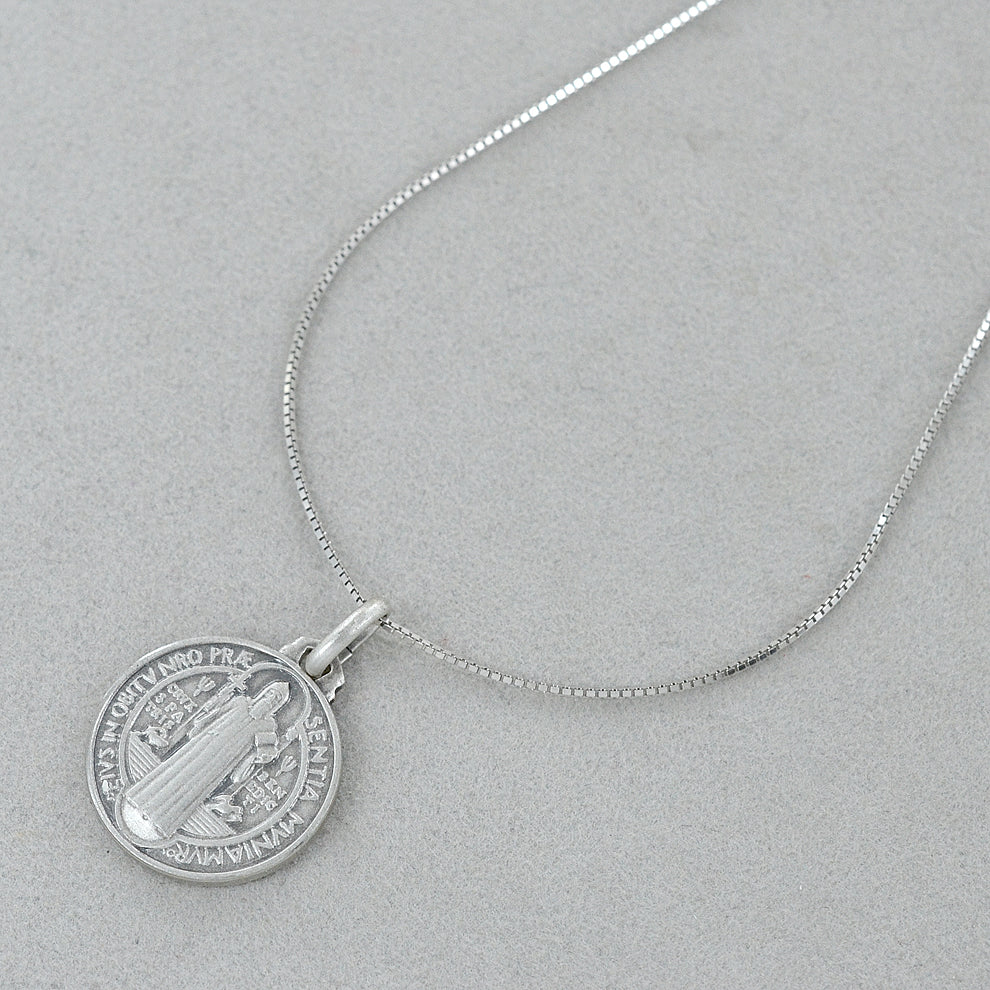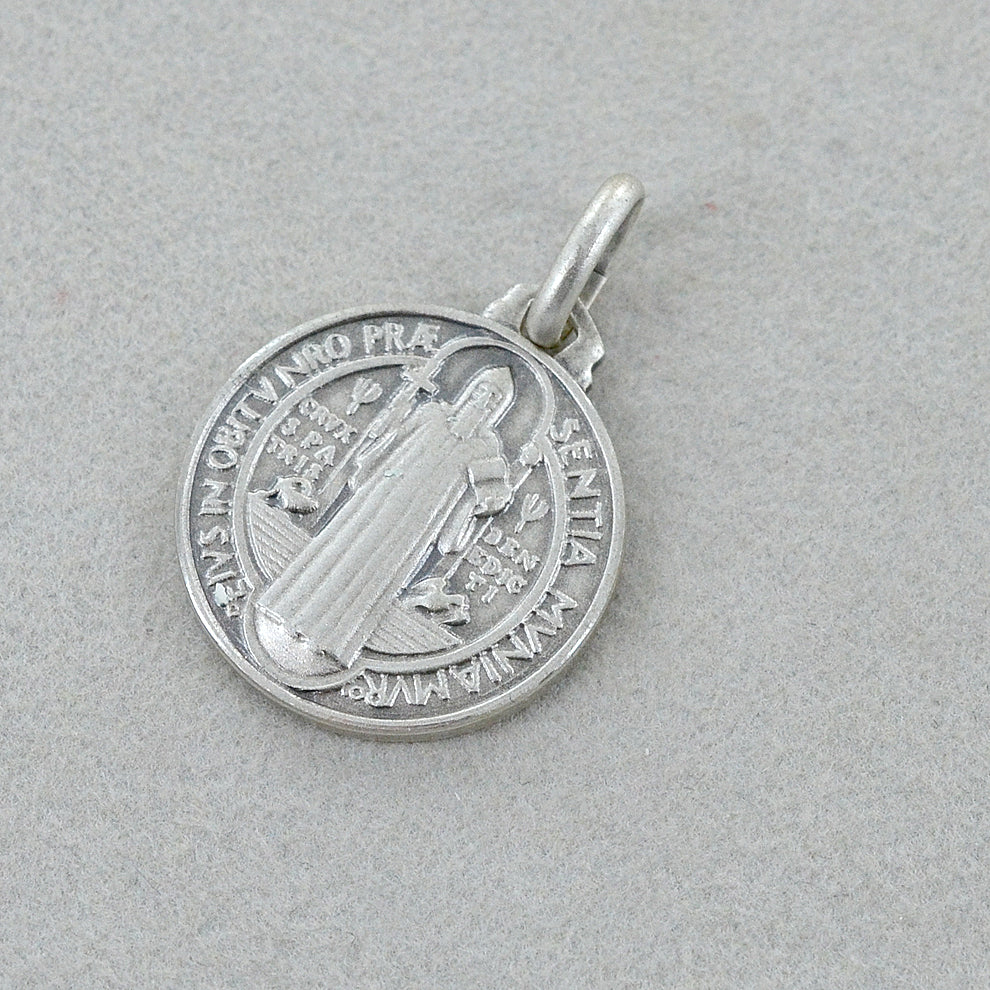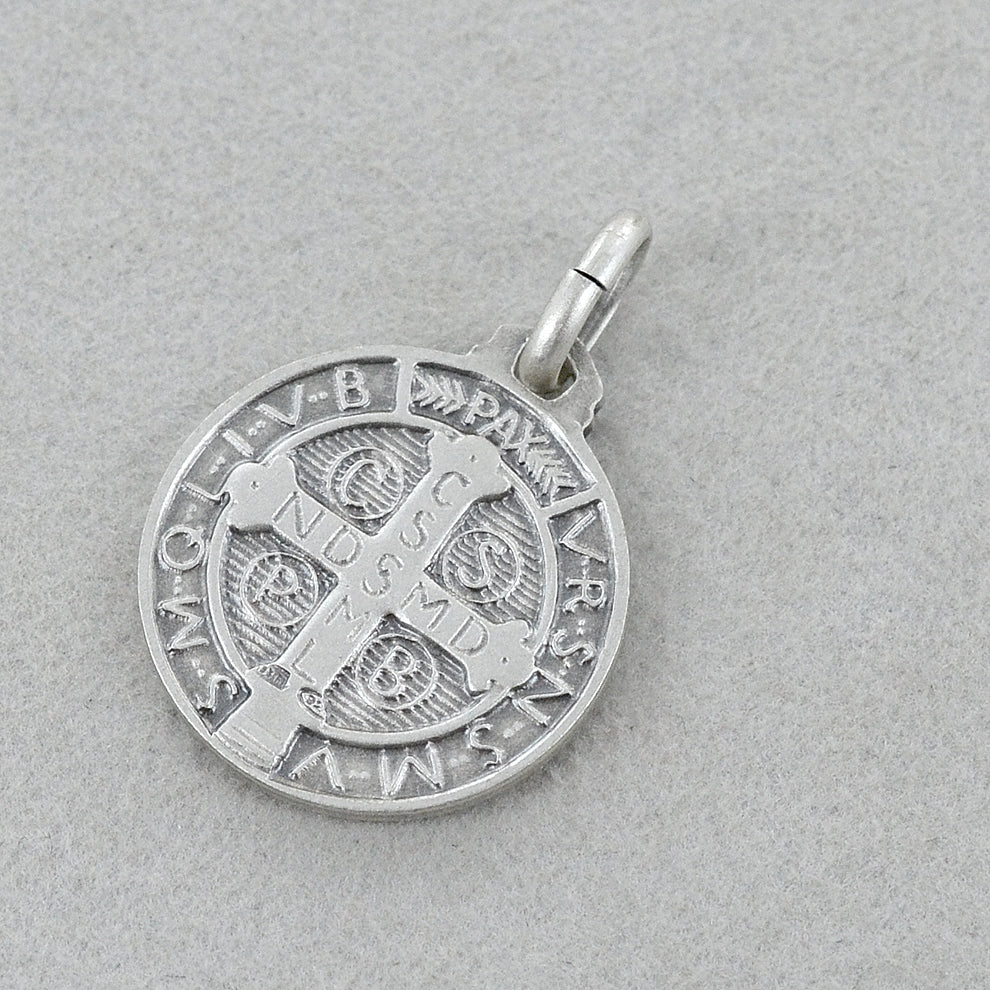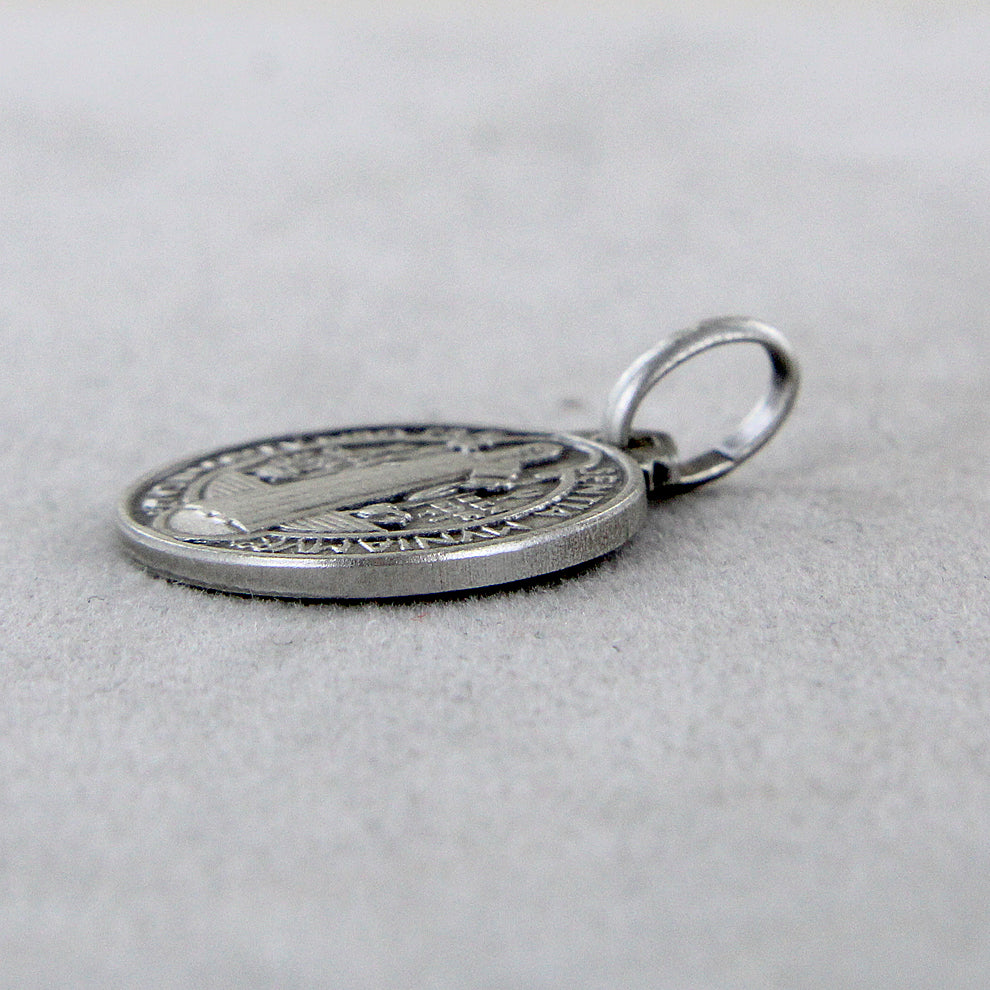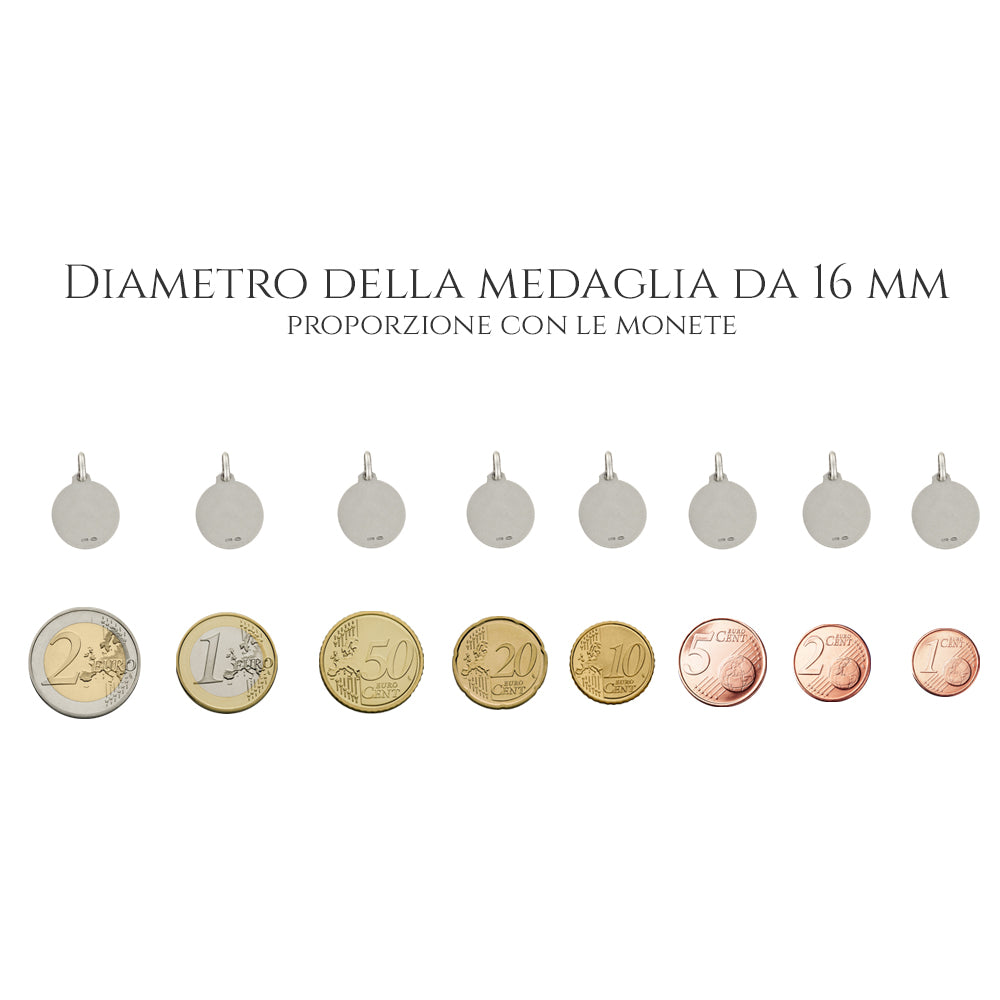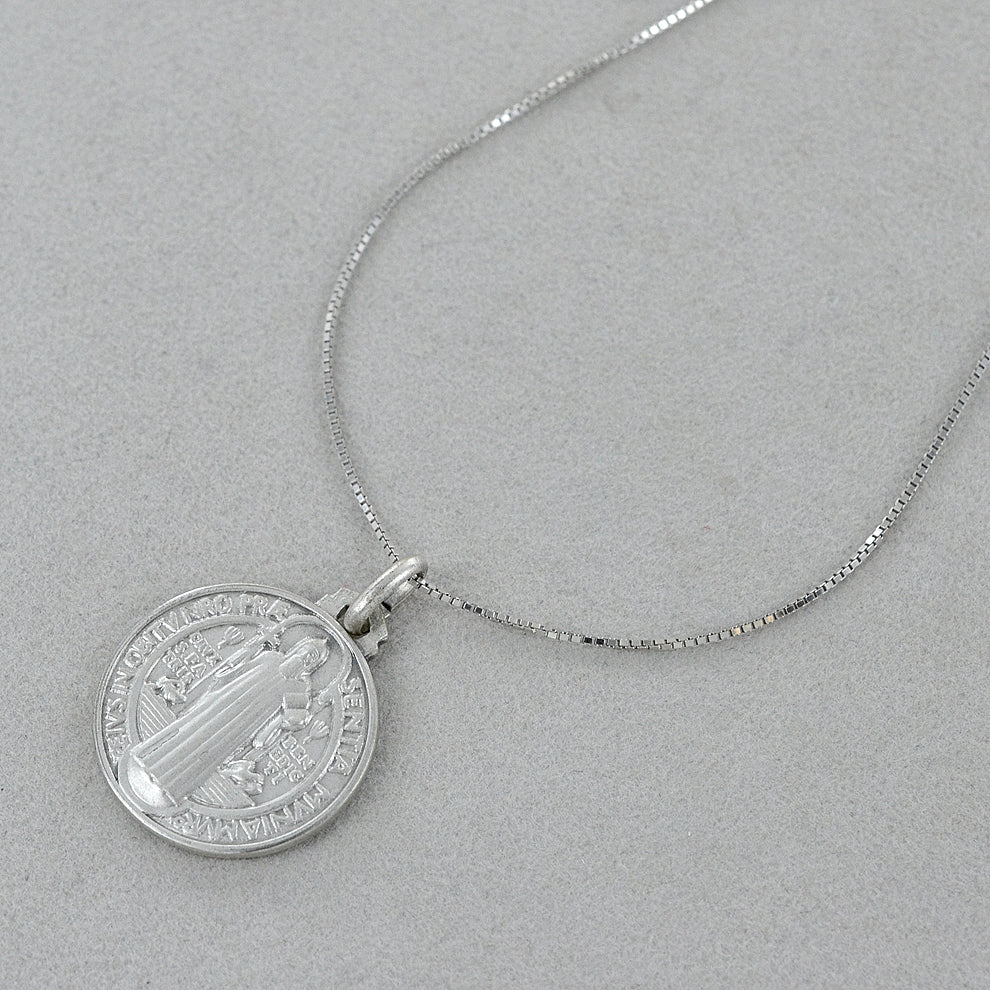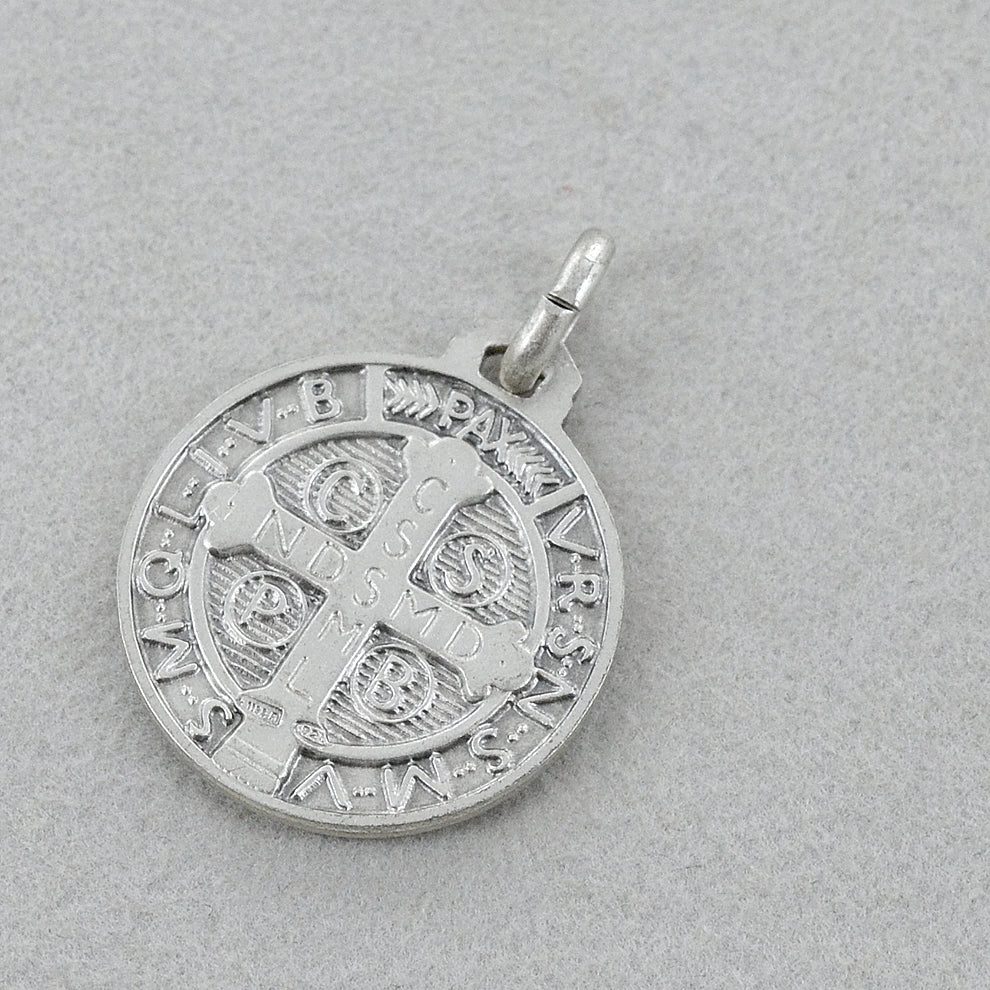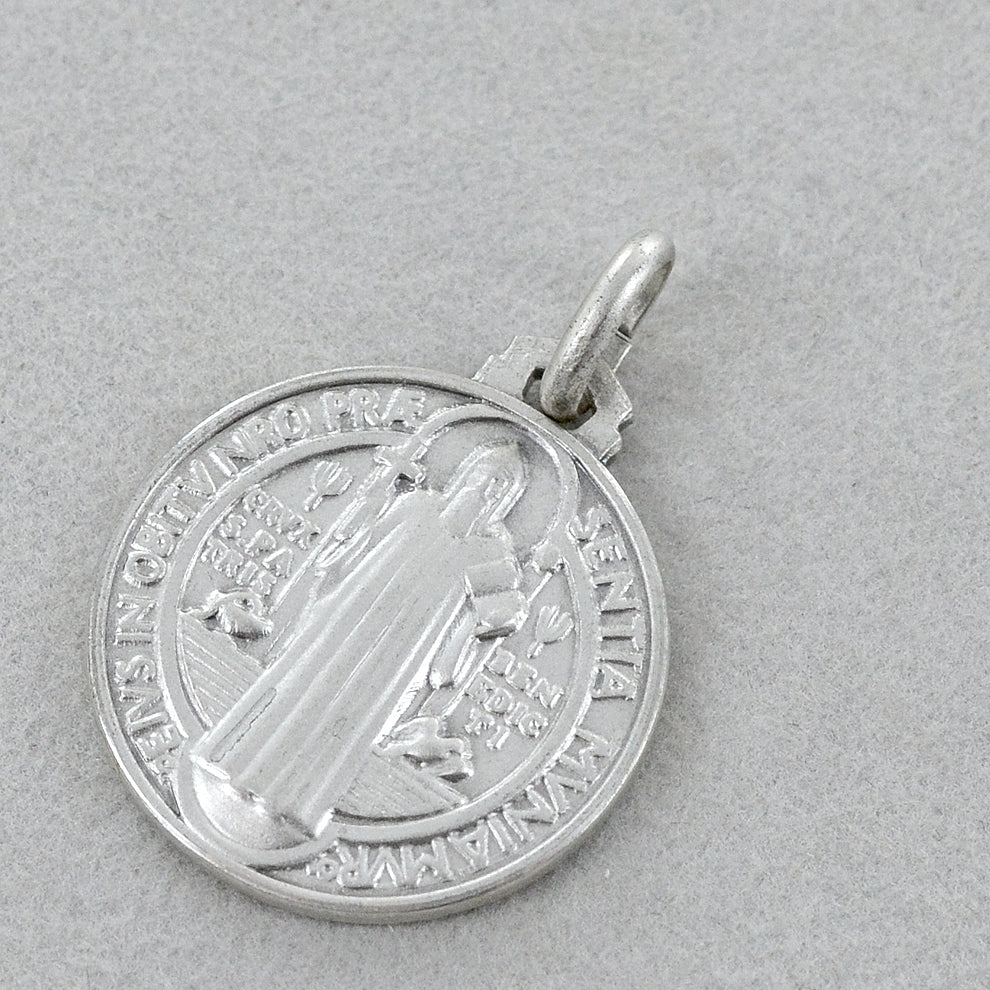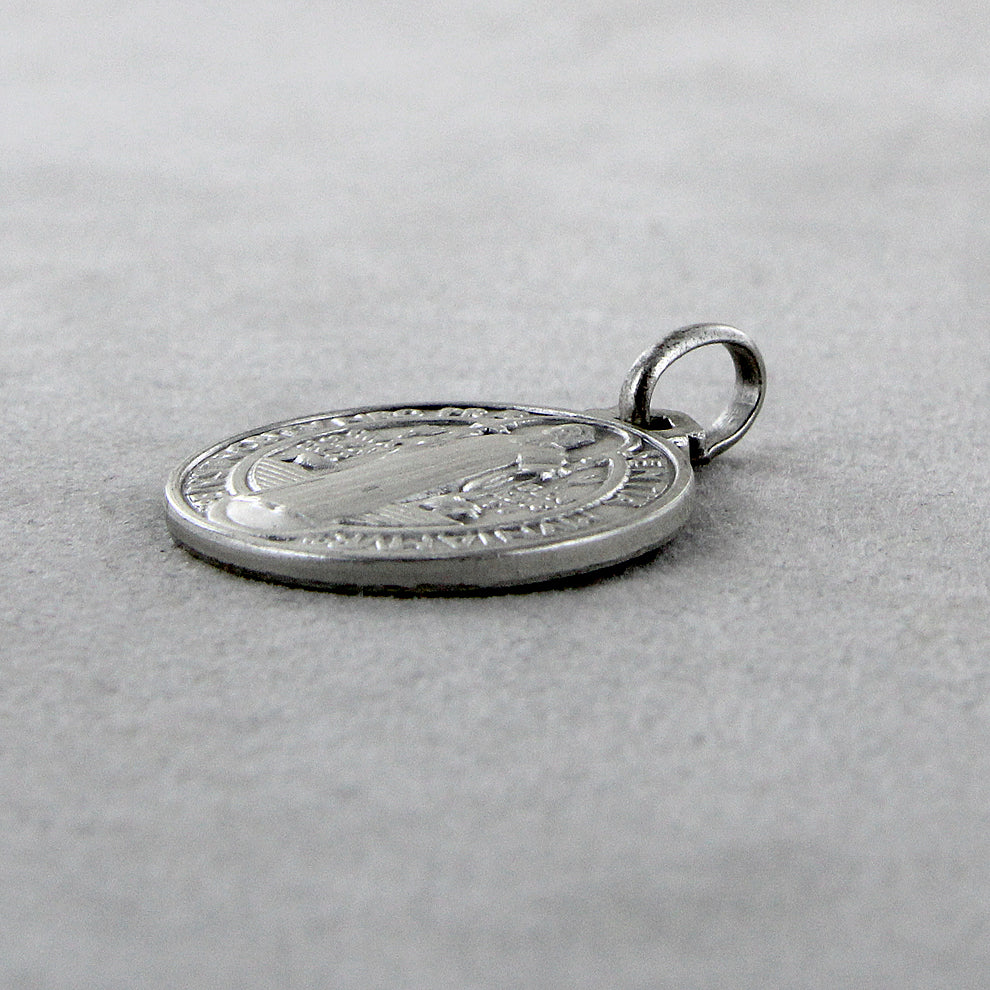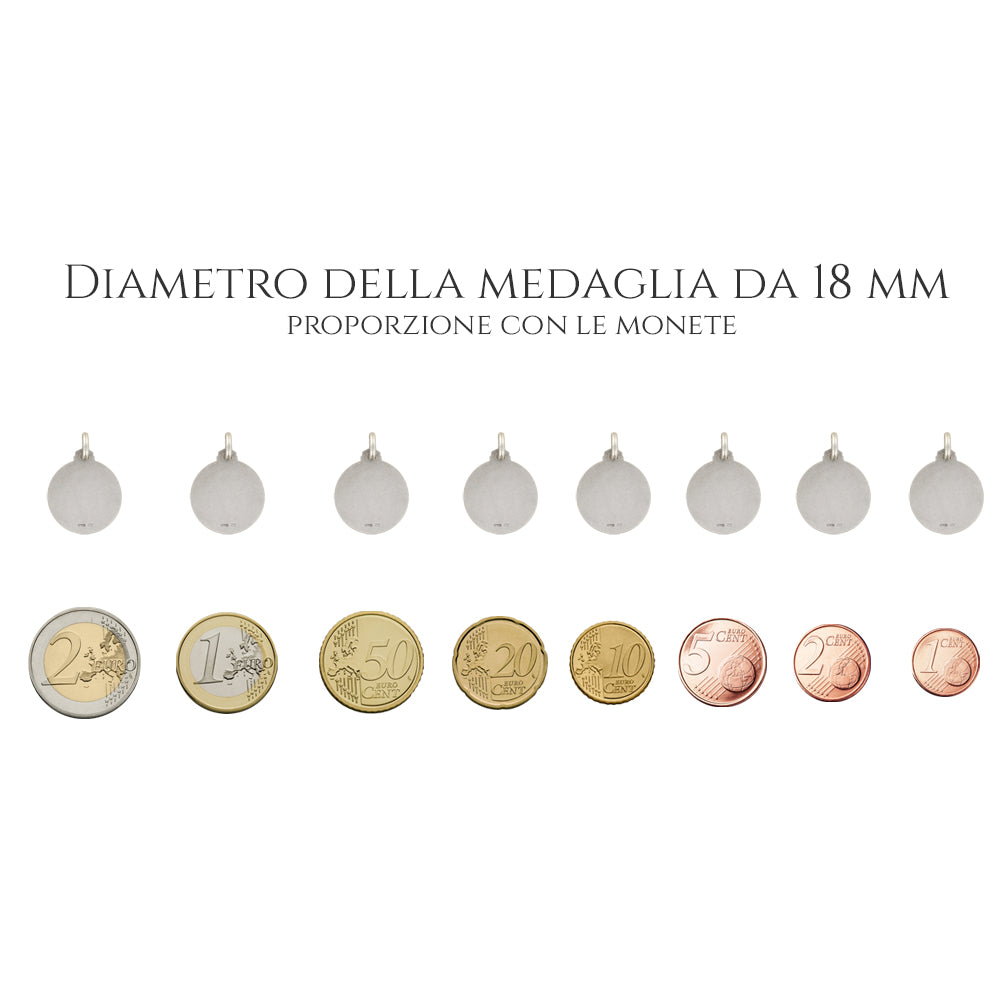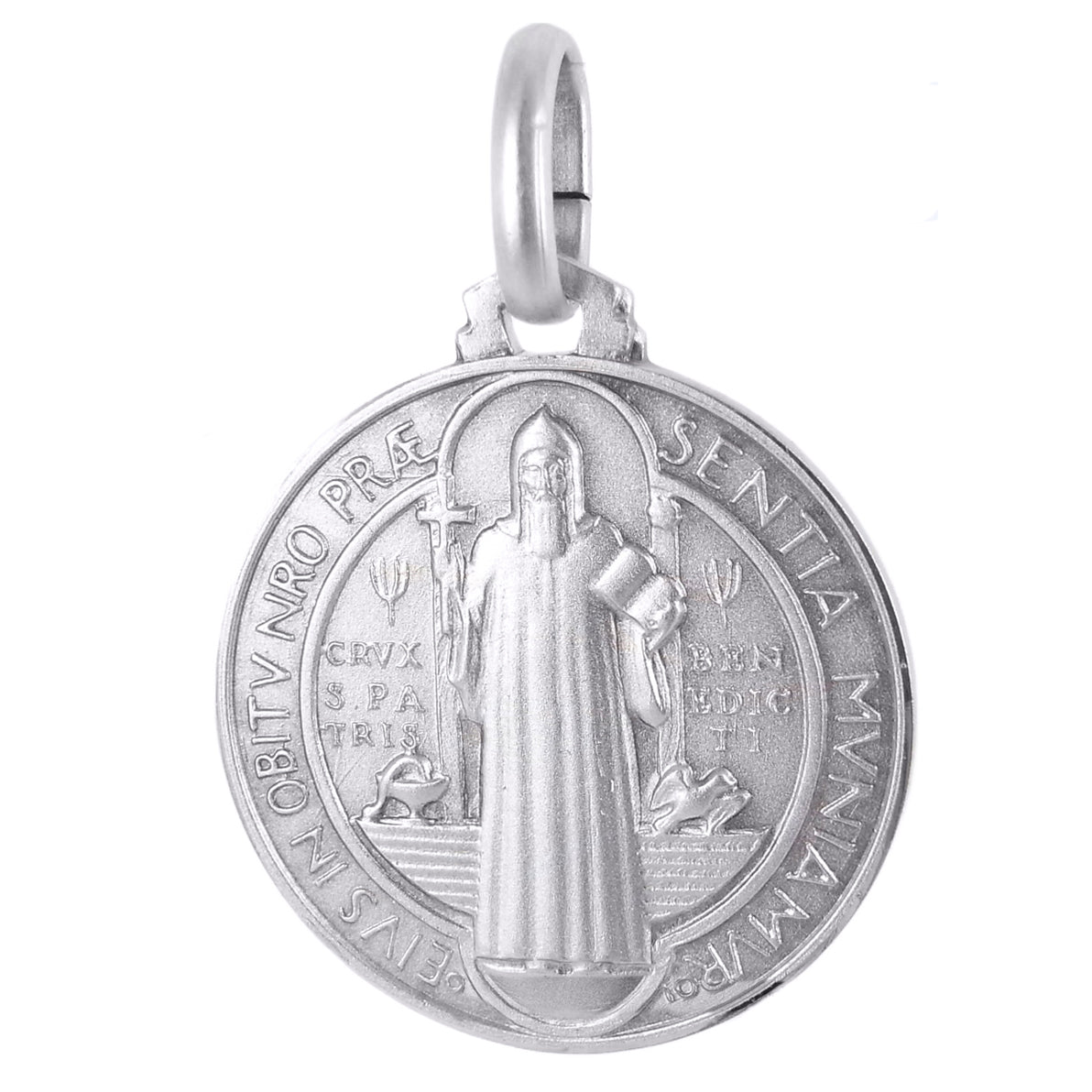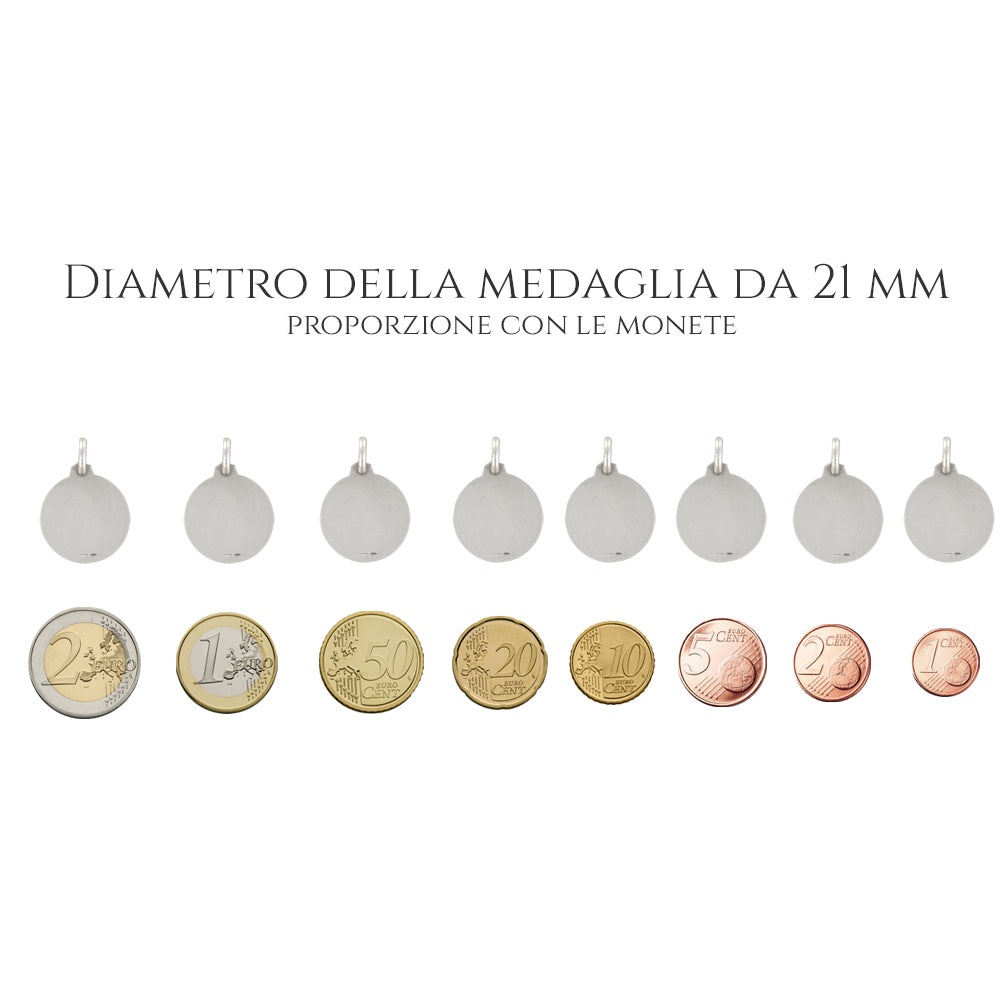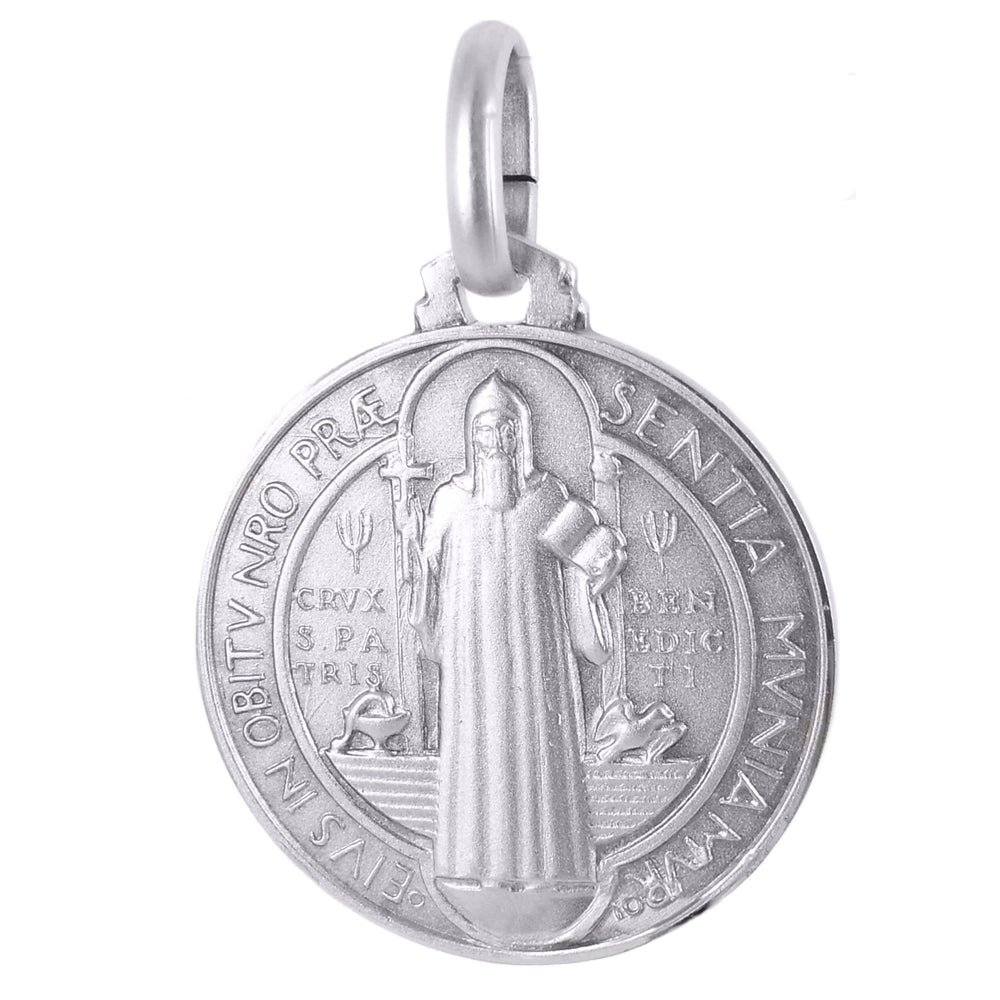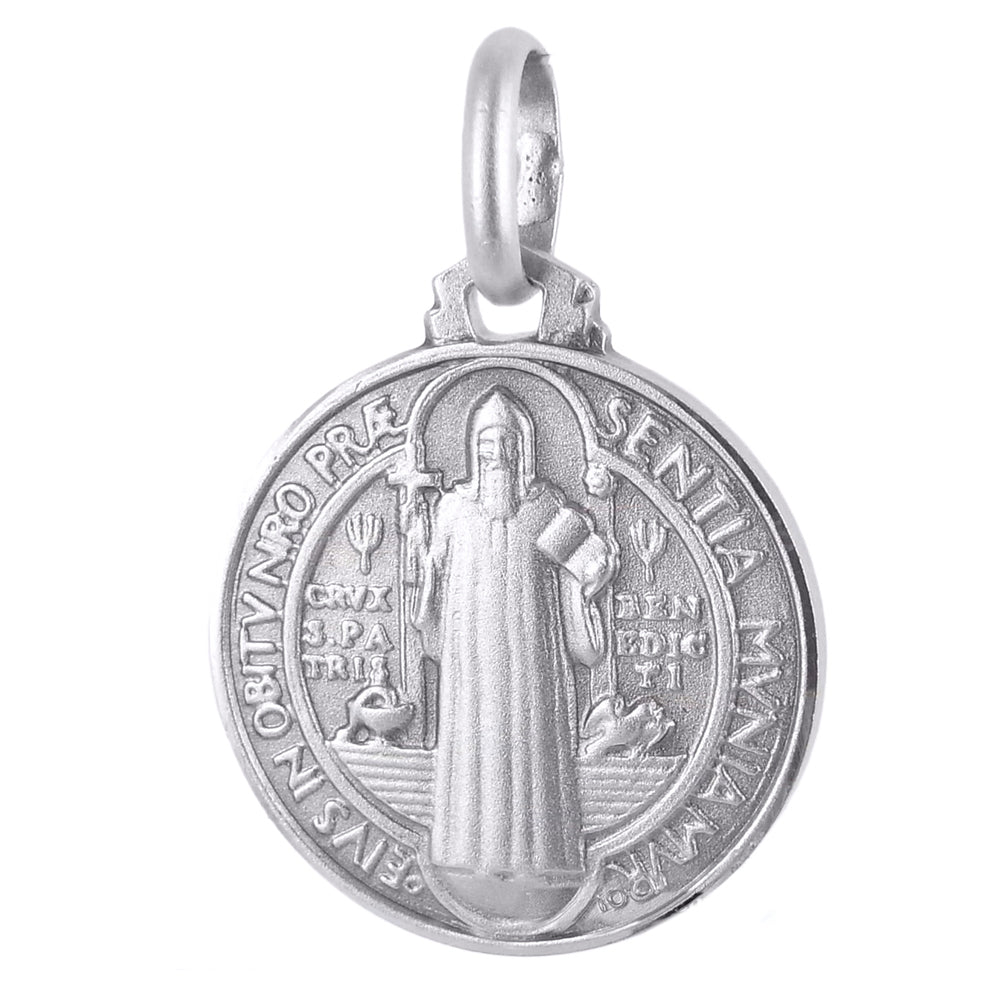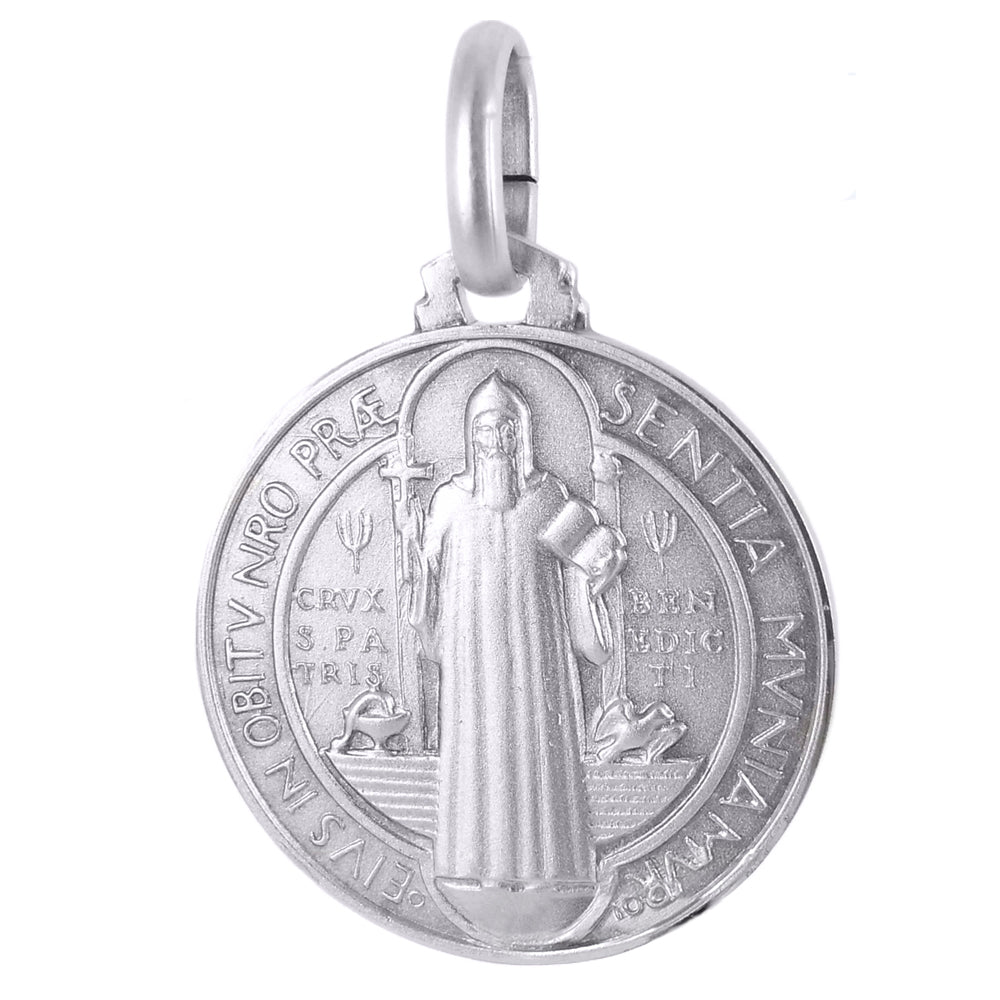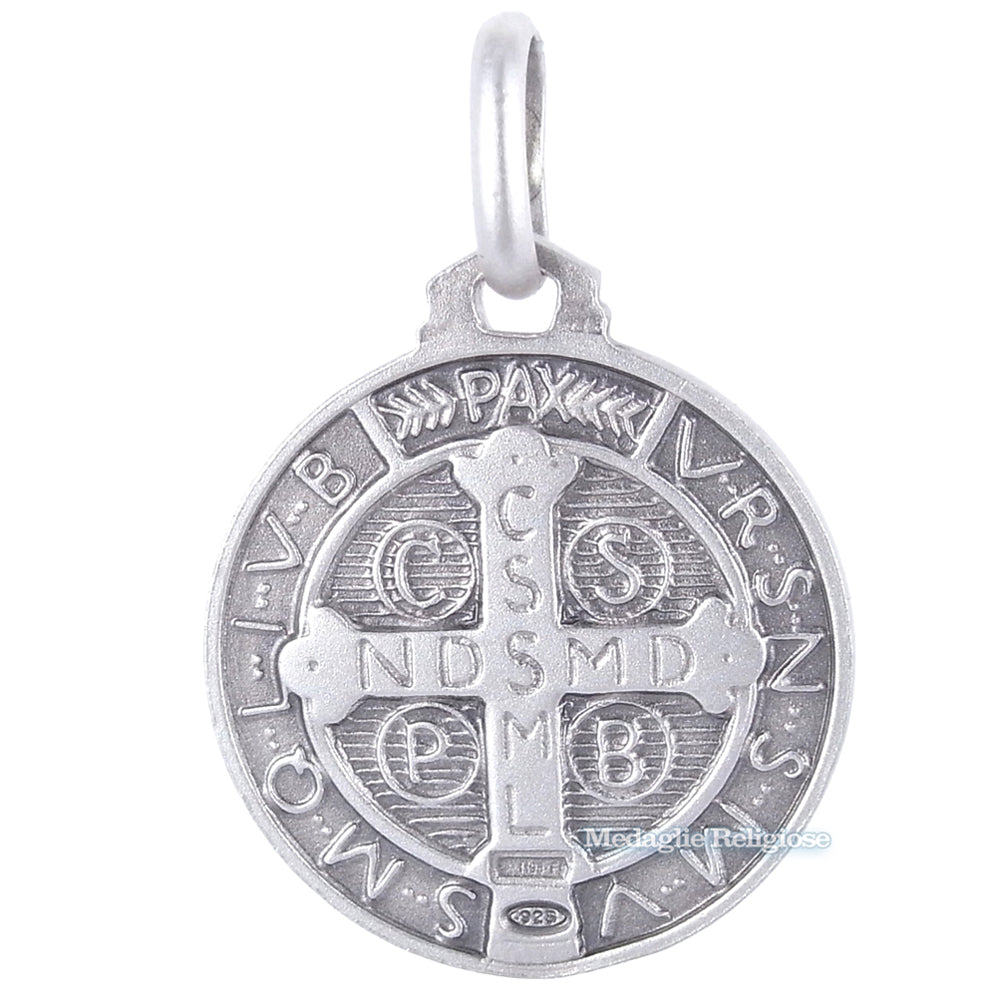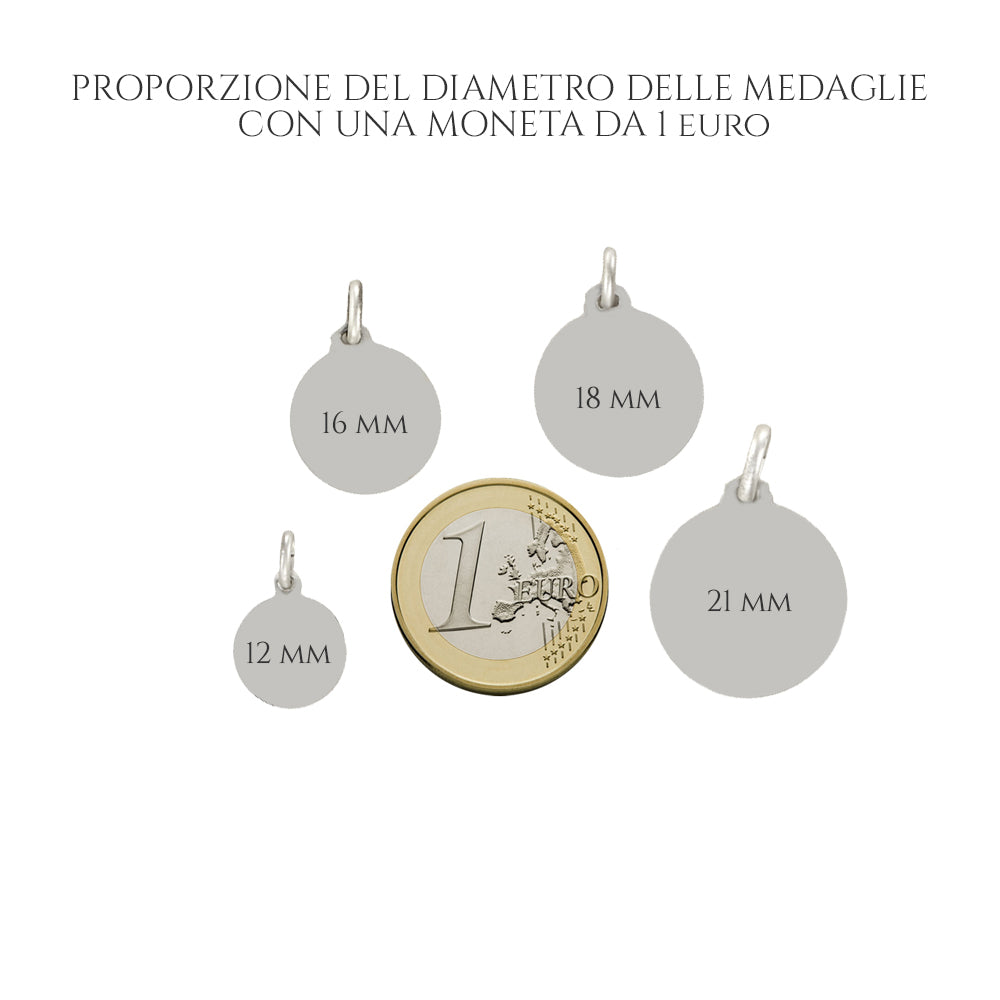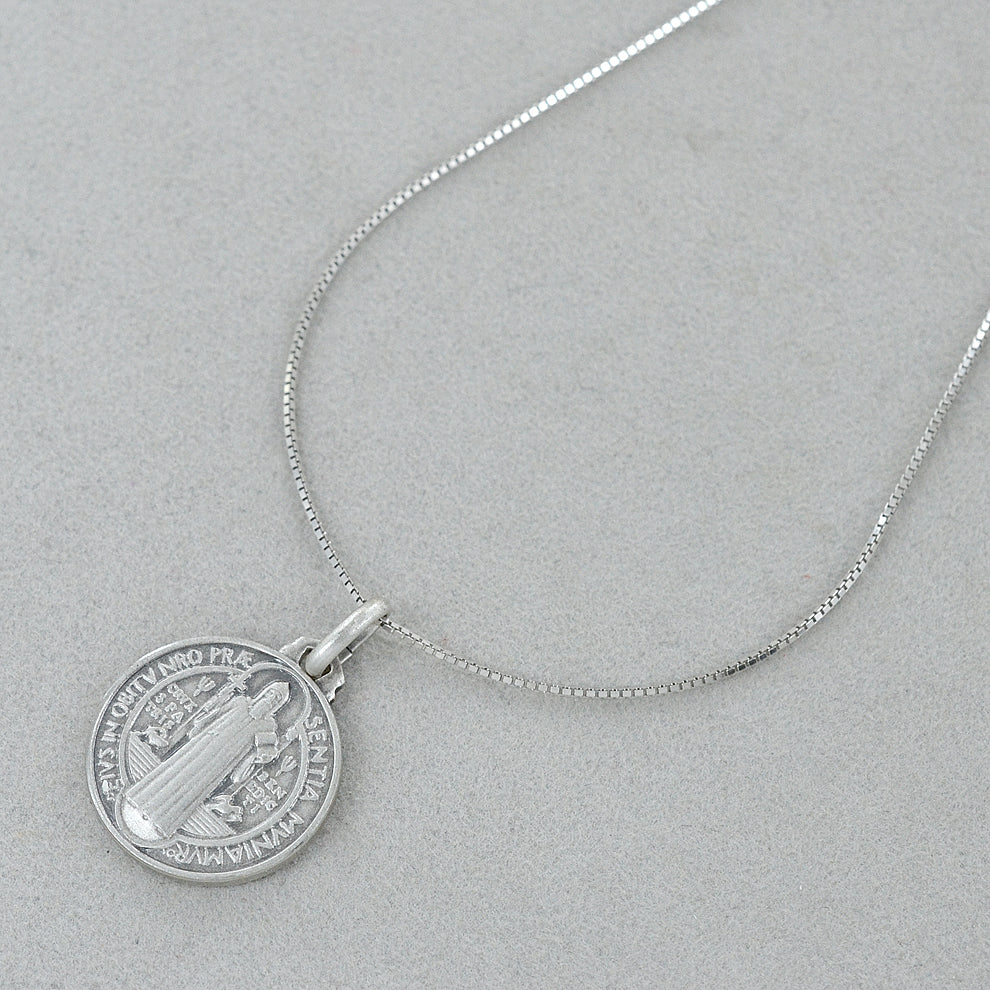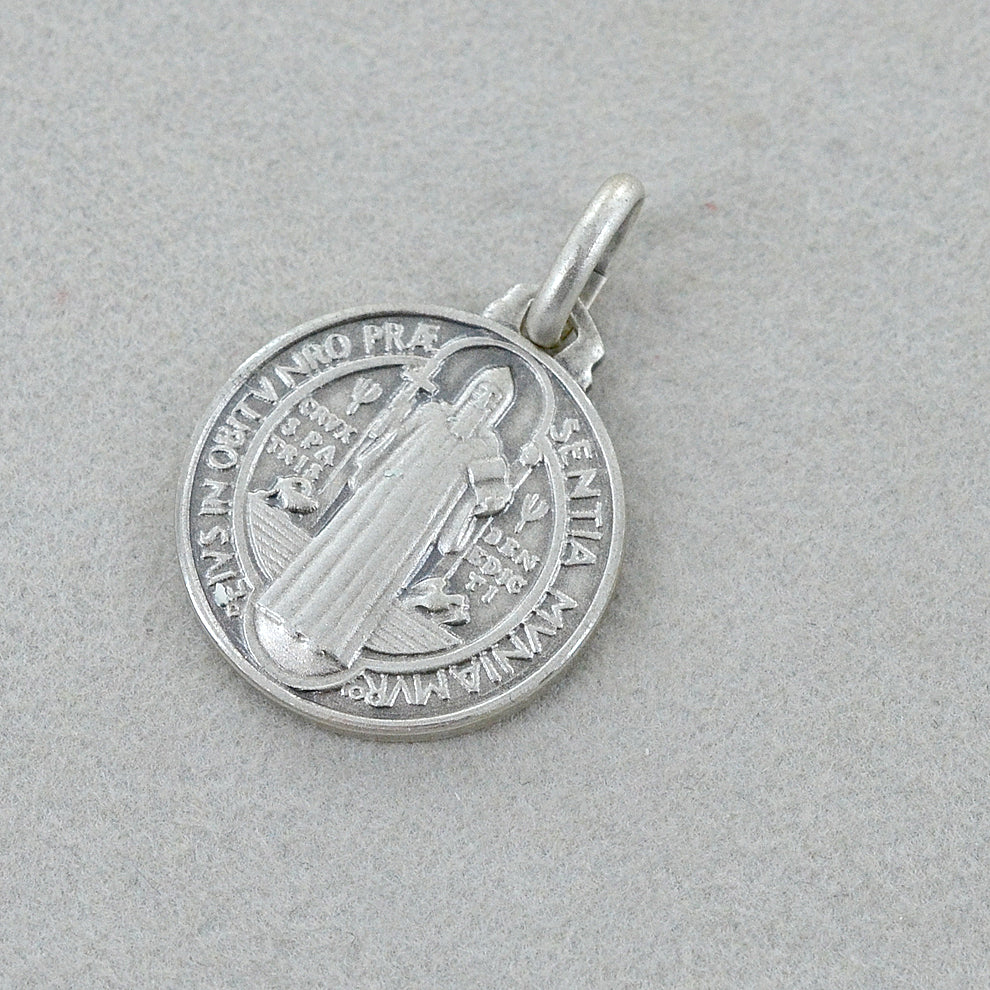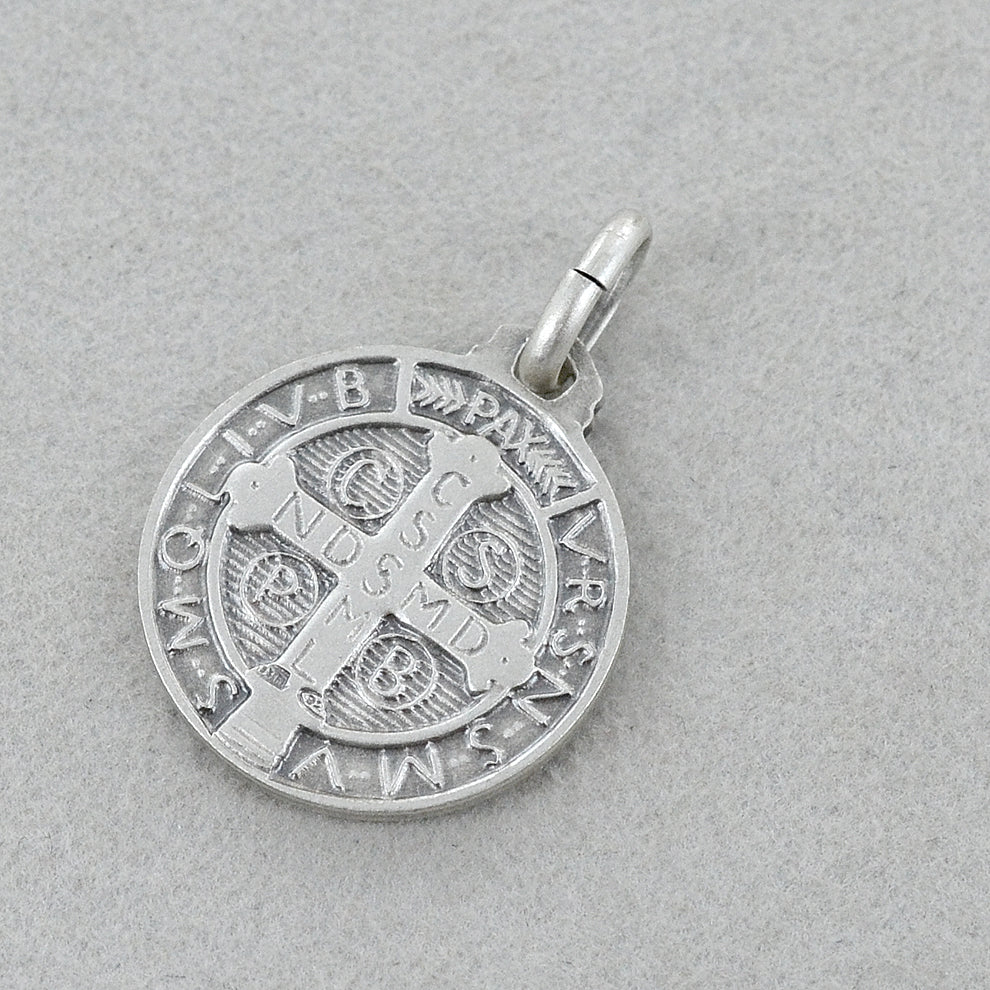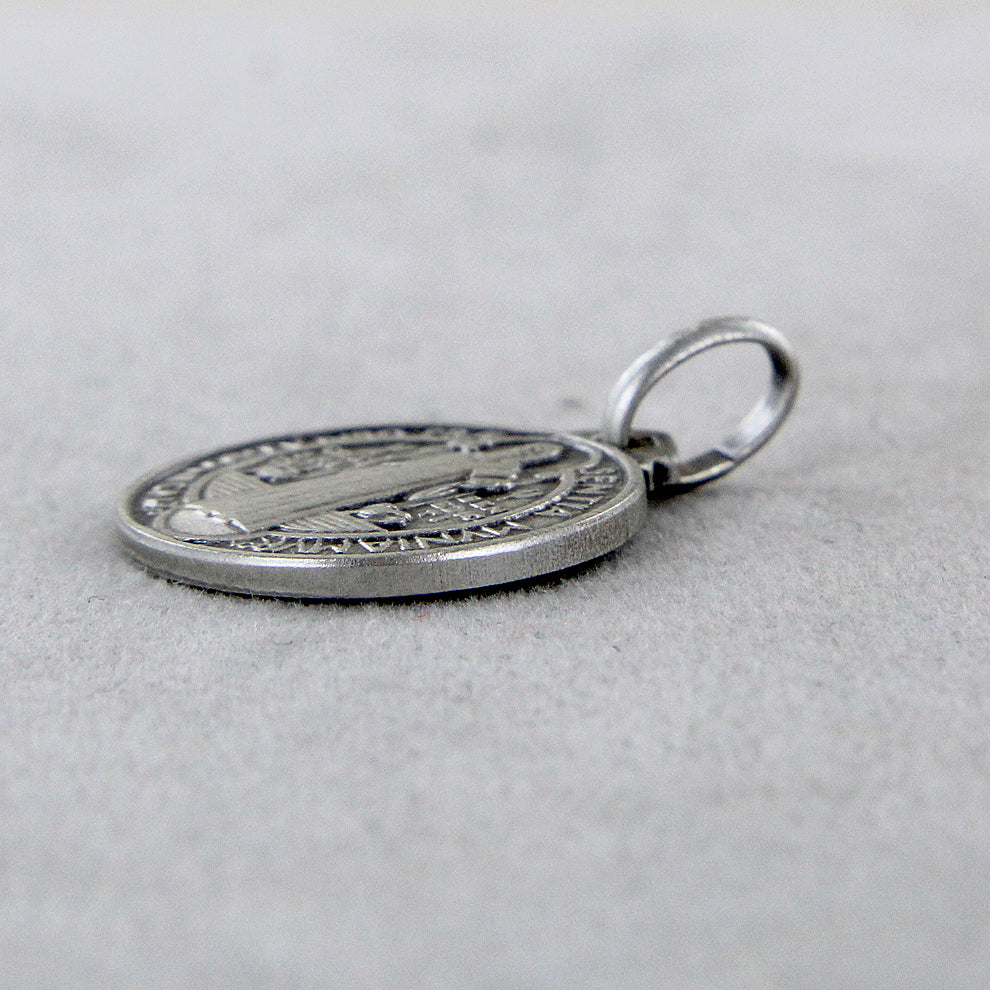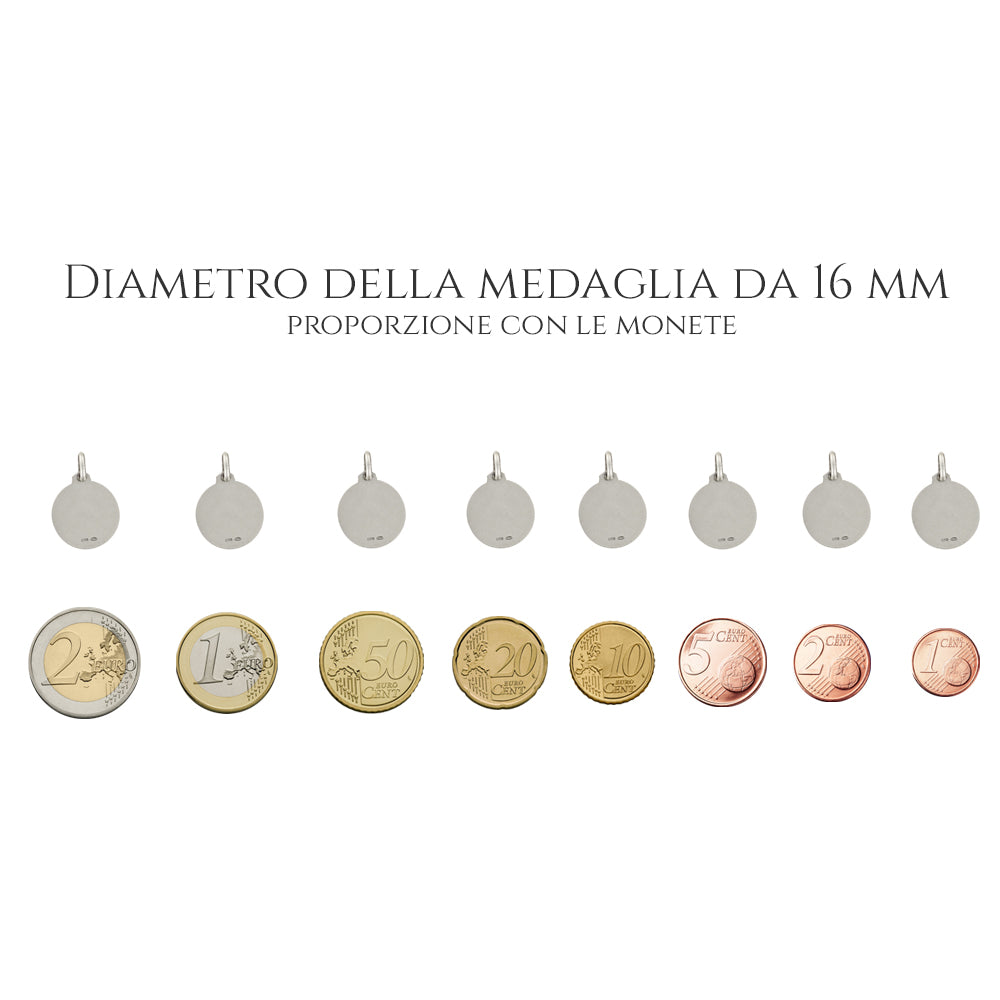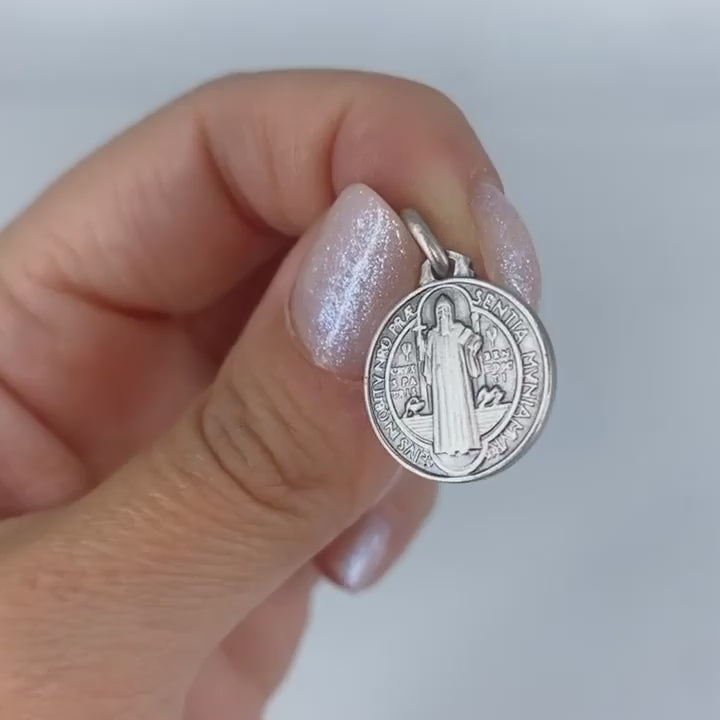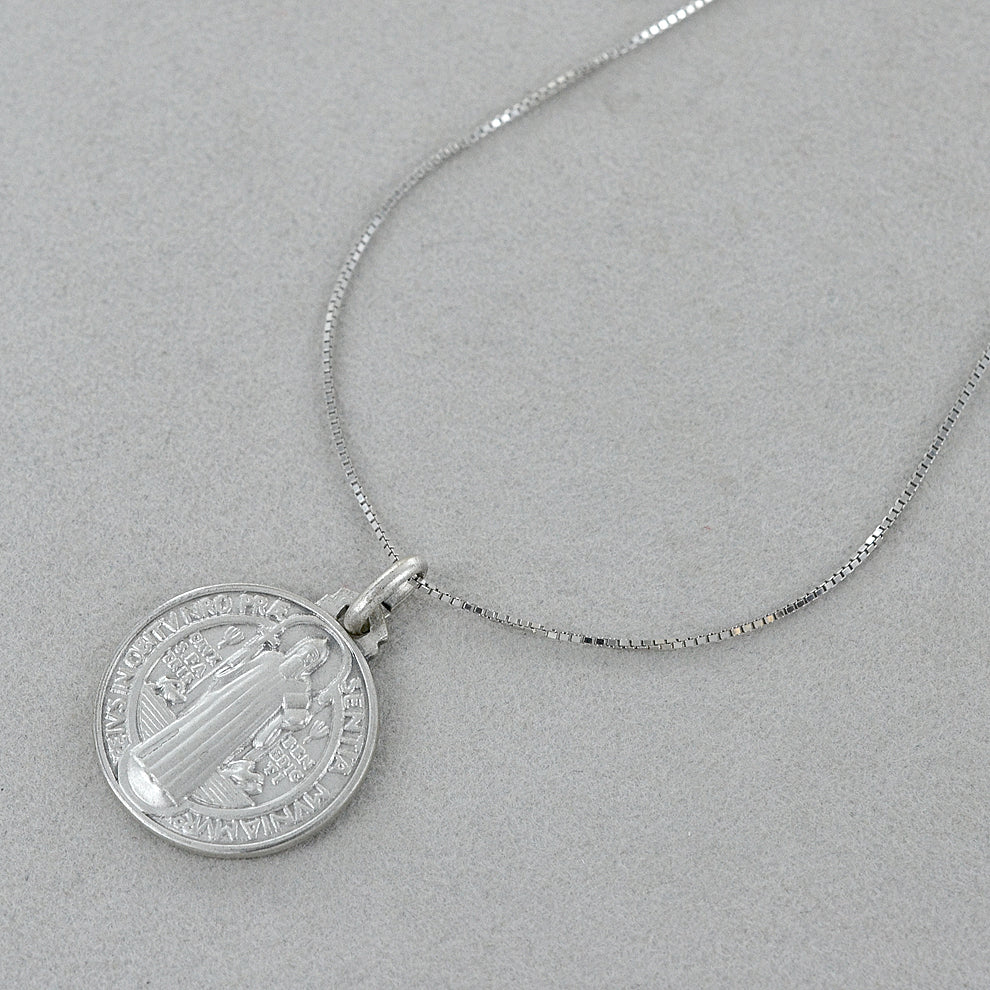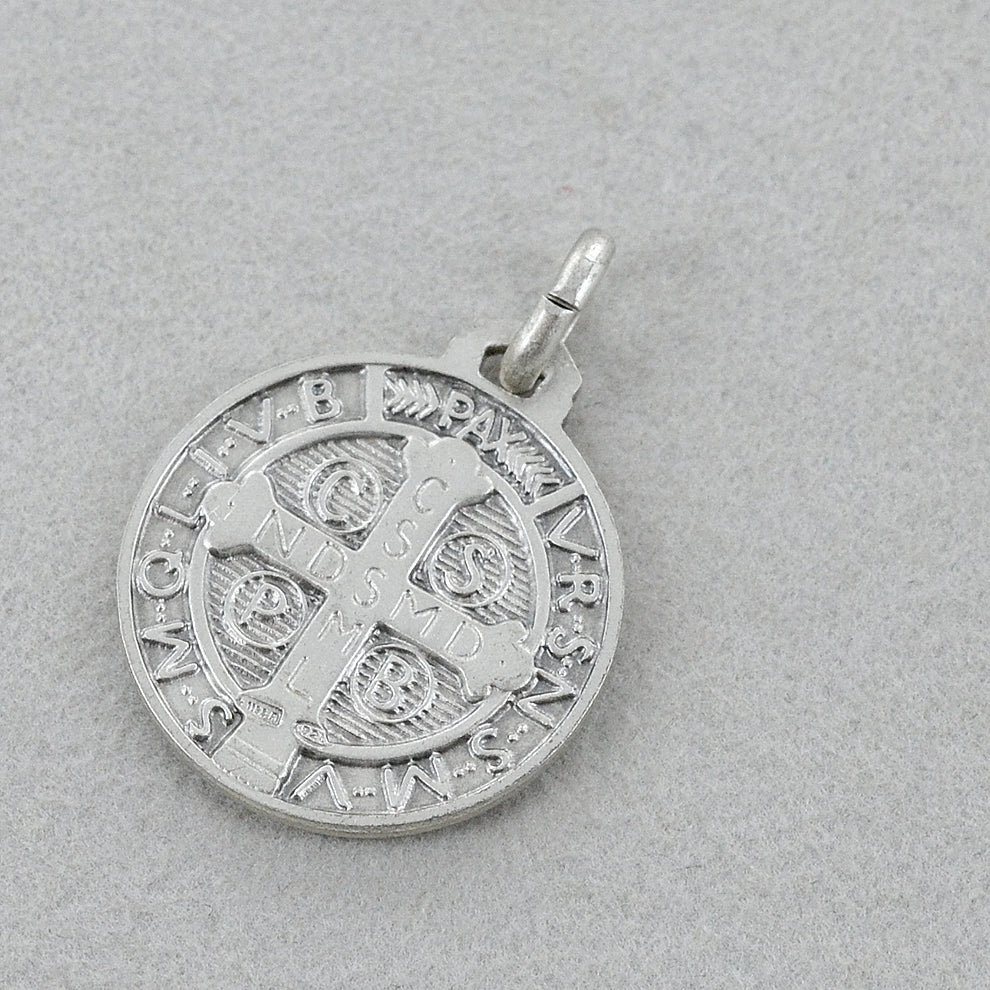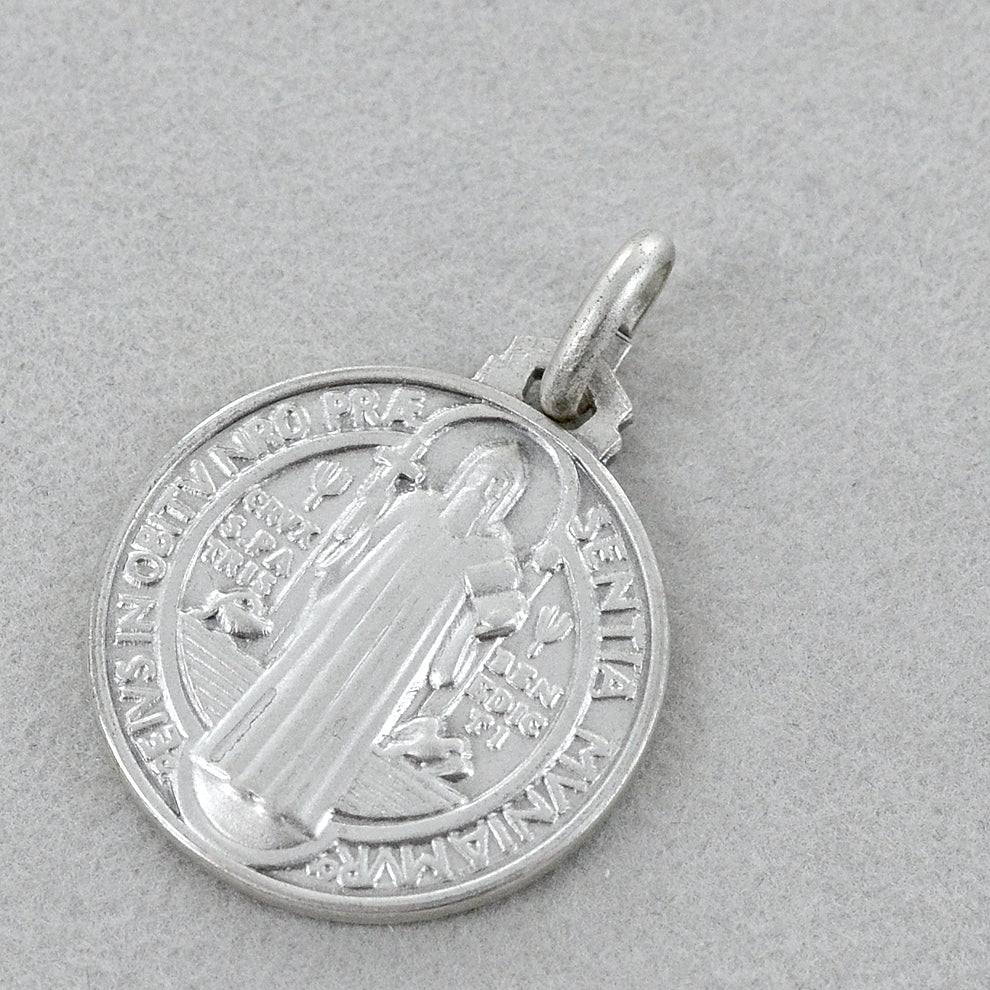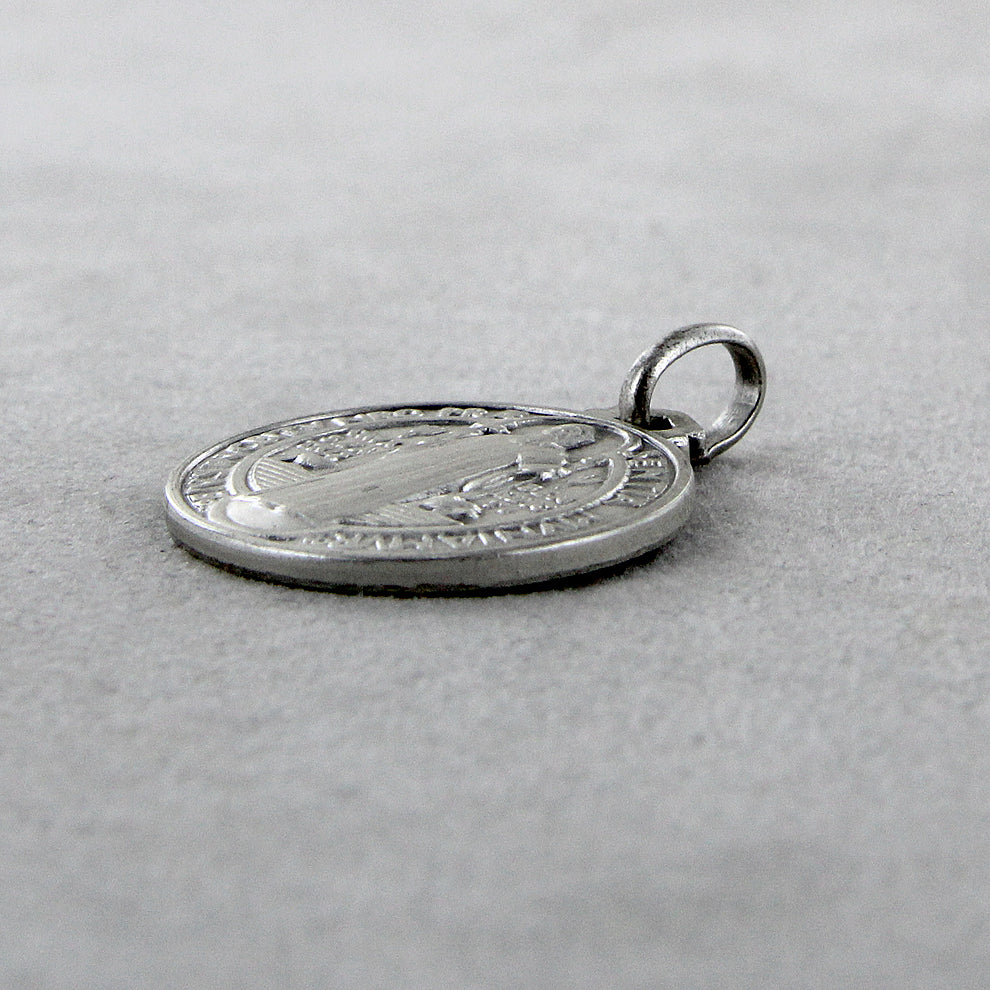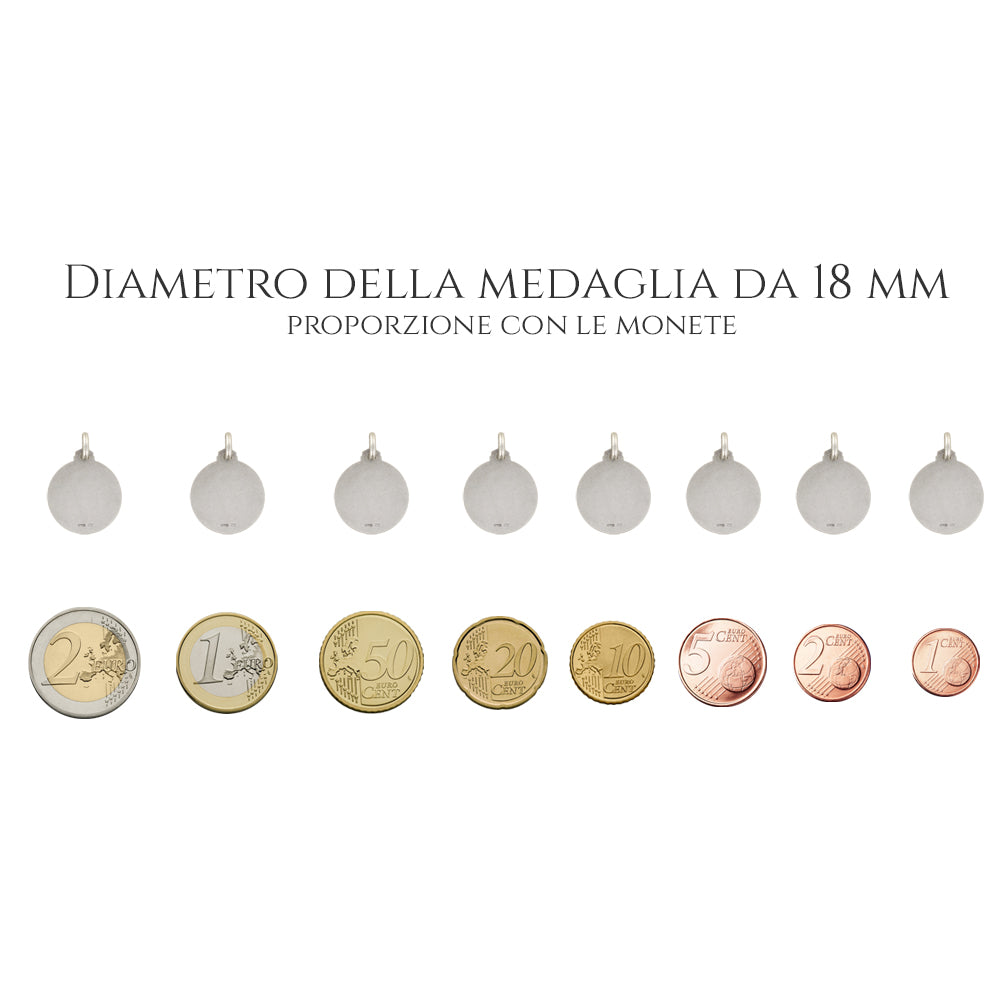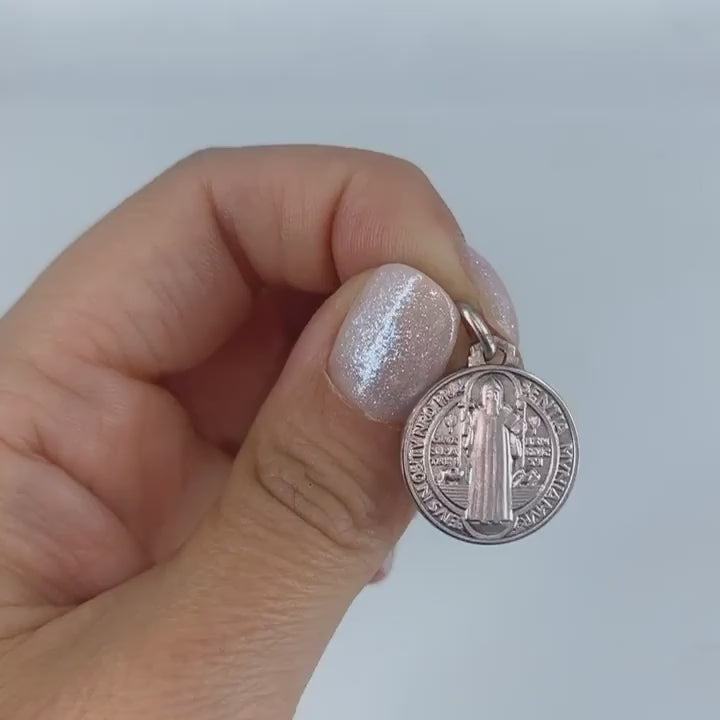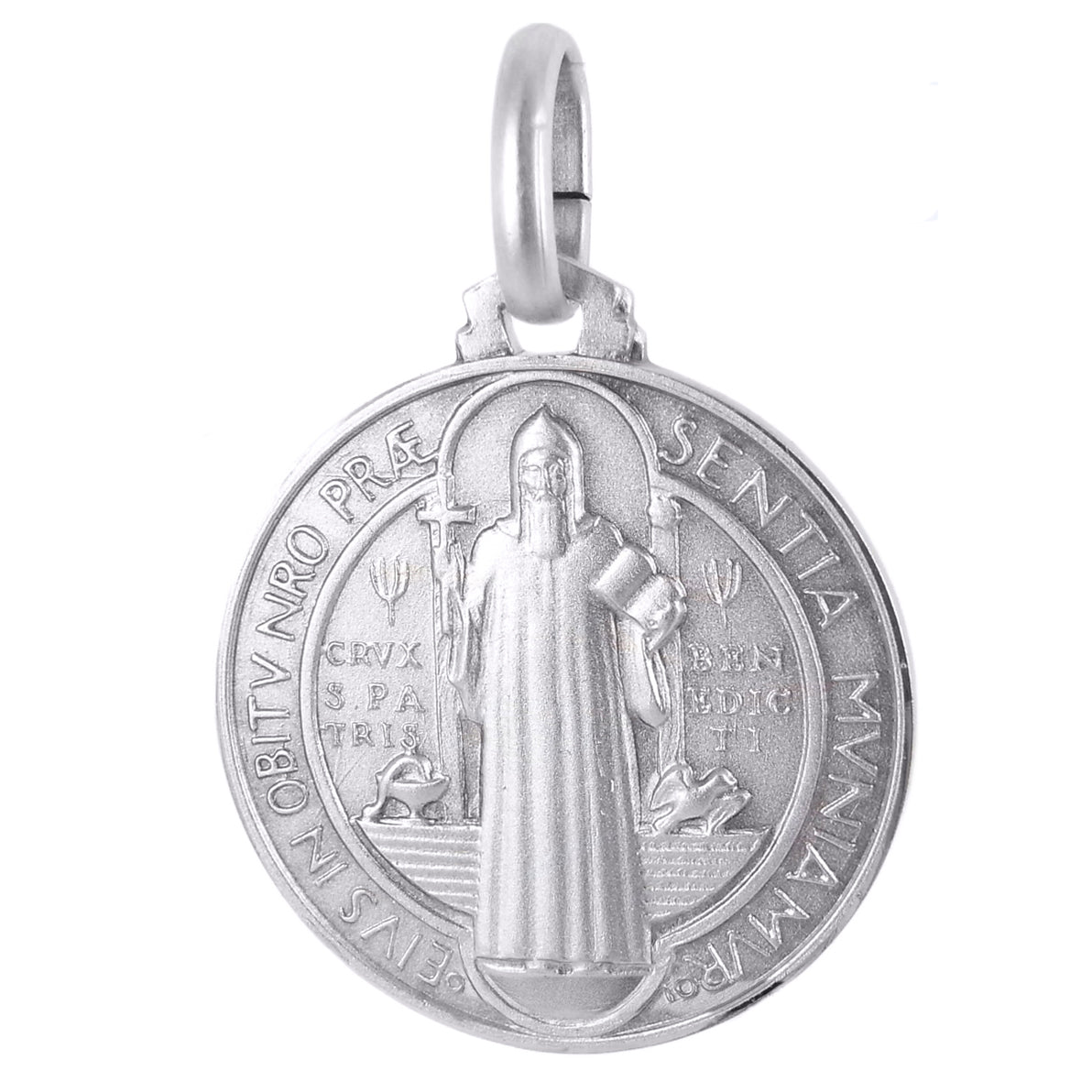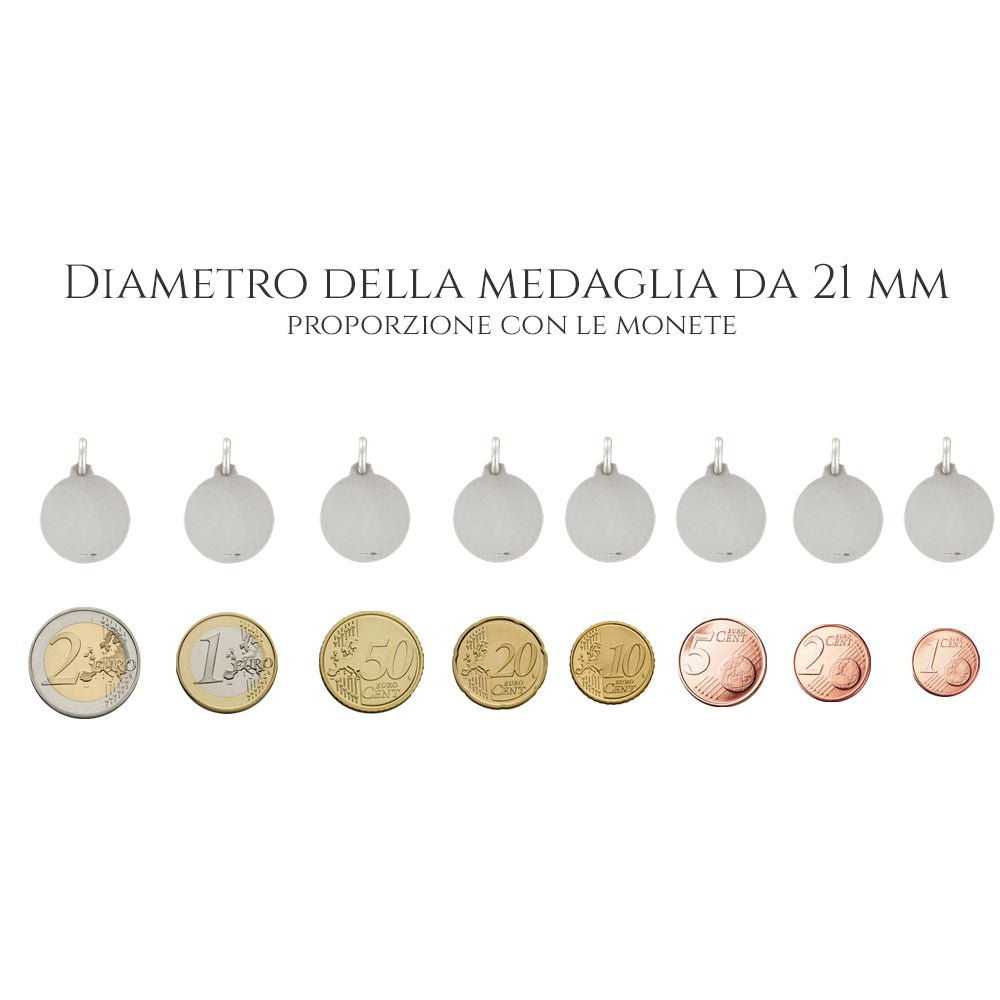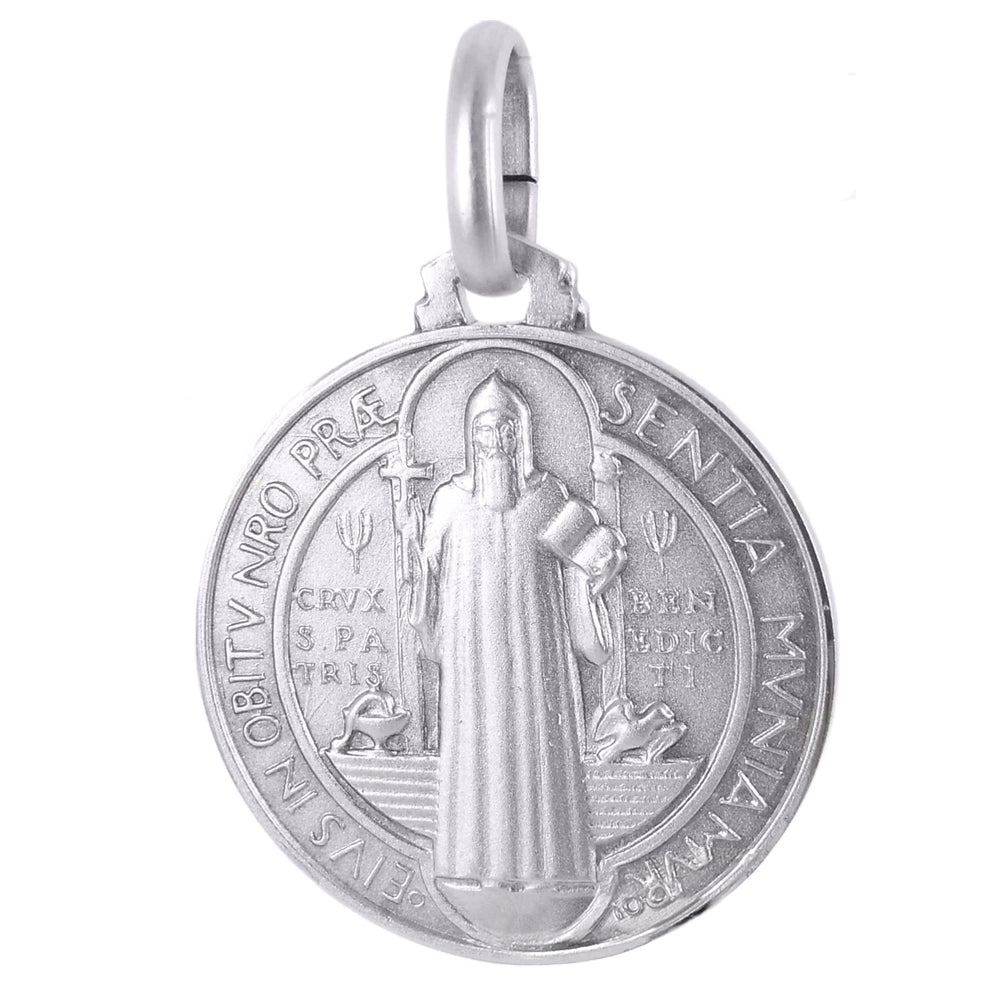Saint Benedict silver medal
Saint Benedict silver medal
Low stock: 7 left
Couldn't load pickup availability
Spedizione Gratuita (oltre €50)
Spedizione Gratuita (oltre €50)
Spedizione gratuita e tracciata con corriere espresso per tutti gli ordini sopra €45
Incisione gratuita
Incisione gratuita
Personalizza il tuo acquisto con un incisione unica, realizzata con strumenti avanzati
Reso facile
Reso facile
Non sei soddisfatto del tuo acquisto? Contattaci per restituire o sostituire il prodotto
The Saint Benedict medal is made of 925/000 silver, minted using a highly exclusive artisanal process which makes this religious medal a real religious jewel to wear. The Saint Benedict medal is available in four different sizes, defined as M, L and XL.
The Saint Benedict medal model M has a diameter of 16 mm, the model L has a diameter of 18 mm and the Saint Benedict medal model XL has a diameter of 21 mm.
The Saint Benedict medal is minted both on the front and on the back and meticulously reports the details of his iconography, meticulously minted in all its characteristics.
The story of Saint Benedict is that of the founder of Western monasticism and the patron saint of Europe. Saint Benedict is known for his monastic rule, the Rule of Saint Benedict, which had a profound impact on the monastic and spiritual life of Western Europe and the Christian world.
Saint Benedict is venerated as a patron saint of monastic life, of scholars, of farmers, of speleologists, of the dying, and of many other categories. His feast, the Feast of Saint Benedict, is celebrated on July 11 in the Catholic Church.
Iconography of Saint Benedict:
Saint Benedict is often represented in Christian iconography with some distinctive characteristics that recall his figure and his role as founder of the Benedictine order and father of Western monasticism. The most common representations include:
Benedictine Abbot: Saint Benedict is usually depicted as an elderly man with a long beard and dressed in the traditional garb of Benedictine abbots, which consists of a black or dark brown cassock, a belt, and a habit or cloak. This habit represents his monastic vocation and his spiritual leadership.
Gesture of Blessing: In many depictions, Saint Benedict may be depicted with his right hand raised in a gesture of blessing, symbolizing his spiritual authority and his ability to bestow divinely inspired blessings.
Book of the Rule: Saint Benedict can also be depicted with a book in his hand, which represents his monastic Rule, a fundamental text for Benedictine and Christian monastic life. This symbol underlines the importance of him as a writer and spiritual guide.
Crown of thorns or serpent: In some representations, Saint Benedict is depicted with a crown of thorns or a serpent in a dish. These symbols recall two legendary episodes in the life of Saint Benedict. The crown of thorns represents the temptation suffered by Saint Benedict in his period of hermit life, while the snake represents an attempt to poison him, but Saint Benedict recognized it and chased it away.
Representations of Montecassino: Since Saint Benedict founded the monastery of Montecassino, some representations may include elements attributable to this place, such as the hill of Montecassino or the structure of the monastery itself.
Angels or monastic figures: In some representations, Saint Benedict may be surrounded by angels or Benedictine monks, emphasizing his influence and the monastic community he founded.
Depictions of St. Benedict may vary slightly depending on artistic style and cultural traditions, but these key elements help identify him in religious painting and sculpture. His image is often associated with monastic wisdom, spiritual guidance and the importance of the Benedictine Rule in Christian life.
